9th February, 2024
The Year of The Dragon – The Cusp of a New Cycle
“January 23, 2012 to February 9, 2013 marked the Year of the Dragon. According to tradition, the dragon is the fifth animal in the Chinese zodiac and symbolizes loyalty — it is noble, gentle, and intelligent, but also tactless, stubborn, and dogmatic. “ New York Public Library
2012 was the year a nascent community from different disciplines and interests – IT engineers, journalists, a pharmacist by degree, a librarian, academics, artists, teachers, students, nature lovers, heritage proponents, authors, film makers, lawyers, the tomb keepers, the former residents of the Kampong at Lorong Halwa, a cartographer, descendants of the stones and the local and international media – emerged, each to play their part in generating awareness that there is this 100 year old municipal cemetery called Bukit Brown, that sits in the center of our island where the stones tell stories of the past and the flora and fauna breathes life into it. And the government wanted to build an eight lane highway that will cut Bukit Brown in half, cleaving apart 100 years of heritage, habitat and history.” It is a rare original WWII site that saw one of the last and fiercest battles on the rolling hills of the land.
Chapter I: How it began…..
The first official engagement with the government under the Ministry Of Development went badly. While the Minister was abroad, his senior civil servants were engaging with civil society on a date to meet him. We wanted a consultation and an opportunity to ask what were the alternatives that had been considered.
By the time a date was found – it took about three weeks – the circumstances of the meeting had changed. First there were “outsiders” those in heritage circles but Bukit Brown was not necessarily a priority. This was not the scenario we had envisaged when we met at the Nature Society’s HQ at Geylang. We came from roughly seven different organisations/communities including one newly minted, all things Bukit Brown, feeling their way in tentative steps through civil society.
The response to the meeting or more accurately the briefing by the then Minister of National Development was an immediate media statement calling for a moratorium on the roadworks signed by The Nature Society of Singapore(NSS), The Singapore Heritage Society (SHS), Post Museum, Green Drinks, The Rail Corridor, API, (paranormal group) and all things Bukit Brown.
Both NSS and SHS had led the email negotiations to pin down a date and an agenda to bring up to the Minister. And the way the emails were going, we knew that was a 99 percent chance, we would not get the meeting we requested. Instead the Minister announced the plans from exhumation to construction of the highway in a PPT, with a concession that the whole process would be documented. A suggestion that a heritage advocate had suggested to the CEOs of URA & LTA when they invited him for a morning prata to ask his opinion. It was indeed a prata flip. Aside from the seven groups, there were heritage bloggers, representatives from clan associations, The Peranakan Association government agencies, , the Preservation of Monuments Board and the National Heritage Board.
The fact that seven groups from civil society including the two most established the nature and heritage societies, issued a statement disagreeing at the haste the decision was reached without genuine consultation, made headline news. Bukit Brown was after all, one of our oldest Chinese cemeteries and the mother of all cemeteries with many remains reinterred there because of major developments where they were first laid to rest. Their burial grounds , had made way for HDB estates such as Queenstown, and so in the past time and time again, the dead had to make way for the living. This was different, an 8-lane highway. In today’s context with climate change a critical and existentialist issue, questions would have been raised why are we encouraging car ownership? Could nothing be done with the then Lornie Road, only eight years in existence ? They were raised then, almost prescient. Back and forth, like a ping pong game, with the ball falling into the government’s side of the table in a staccato volley. We were called naysayers, unsympathetic to motorists and asked to offer solutions to solve traffic jams.
Then the government announced that they had taken on feedback and as a concession to civil society realigned part of the highway as a bridge. It was the most natural of realignments as the previous plan would involve building the highway into a valley. What had happened was that the Nature Society of Singapore had submitted the proposal independently to allow space under the bridge for animals to pass and shady plants that did not need much sunlight, It did save a few graves from certain “death”. The concession by the authorities was much lauded in the media as an indication that the government of the day was not recalcitrant and was responsive. With that, the first chapter of our journey came to a close.
Chapter II Letting Go……
Two communities, Post Museum and all things Bukit Brown moved on and forward, to continue to conduct public guided walks to spread awareness, the latter community branched into themed walks such as World War Two at Bukit Brown hooking up with a war archaeologist from the UK, whose family was stationed in Singapore because of his wife’s career. He had found himself living on the doorstep of the battleground around the black and white houses in Adam Road and later explored the Mount Pleasant black and whites the Japanese had occupied. He started to conduct WWII guided walks detailing battlegrounds that covered the Island Club links into Bukit Brown proper including the names of soldiers who are still missing and their last known locations. Their remains may very well lie under the highway – grist embedded in the concrete – even as their names are acknowledged at the Kranji War Memorial.
Outside of Bukit Brown, Post Museum which is an arts group helmed by a husband and wife team, secured a grant for an exhibition held at SAM, the Singapore Art Museum. They were to curate other exhibitions at the Substation and the exhibition space in Bencoolen Street of La Salle College. And they have taken the Bukit Brown “index” to the USA. Days before the exhumation exercise was to start, they arranged a candlelight remembrance and lit up the entrance into Bukit Brown. That entry into the cemetery is no longer, absorbed now into the Lornie Highway.
Particularly poignant in Post Museum’s first exhibition at SAM was an installation where the names of the deceased who had to make way for the highway were written in chalk on a big wall by volunteers and the public, with a photo collage of some of the volunteers at their special/favourite spot in Bukit Brown. The GOH for the opening was Ms Jane Ittogi, the present First Lady who was Chairman of SAM then. Ms Ittogi was to later be the GOH for a brownie event, – brownies, that’s how the community of volunteers under the banner of all things Bukit Brown are known to the public. It was to be a much bigger event over a weekend with exhibitions of artifacts including a letter written in romanised Hokkien, presentations on nature and heritage, and a screening of a documentary, Light On Lotus Hill about the efforts here to assist in logistics in support of the Sino-Japanese war. It was a collaboration with the Chui Hway Lin Teochew Club. It followed very soon after atBB also curated the first exhibition at The Substation partnering the Singapore Heritage Society and the Sub. In the meantime, an 8 part TV series called “History from the Hills” debuted with Bukit Brown as the central space, telling the story of Singapore from pre colonial times to independence. It was to be dubbed into both Mandarin & Malay in years to come.
Along the way, the new kid on the civil society block, picked an award from the inaugural Singapore Advocacy Awards celebrating the best and most promising in civil society. It was more than encourage, it sealed, resolved.
But it was the international media who took up the gauntlet to source alternative views, different angles to the issue The BBC, CNA, and Reuters had correspondents based here. Brownies were interviewed on air and quoted in print. They sent in questions to the government but they had no comment. The Economist correspondent and the family of husband and wife with one young son and a mangy and lovable Singapore special lived near Bukit Brown. They treated Bukit Brown as their backyard and had joined the brownies in their explorations, “bush bashing “ together in areas tight with above and under growth. He blogged it in The Banyan. A Singapore artist and former photojournalist with the local media and her partner, a Pulitzer prize winner for journalism who flew in from New York for the Singapore Writers Festival, arranged to visit the site with brownies and an academic in tow, and somehow managed to gained access to the storage where the tomb artifacts of exhumed graves were stored and snapped a few choice photos. And so that was how Bukit Brown Cemetery and us found ourselves in The New York Times in a feature article.
Chapter III Gaining Traction & The Message in the Bottle
“People with Chinese zodiac dragons born in 2012 have great vision and ambition. In addition, they are full of patience and persistence. Therefore, they can achieve success in their career field easily. They are bold people full of justice and energy, and they like to help people who are in trouble. They have good interpersonal relationships, because they care about friends carefully. They have a unique style and can give everyone an interesting chat when they are in a low mood.”
We are not sure that accurately describes the community but time has proven we are patient and persistent. An application was made to the World Monuments Fund, to have Bukit Brown Cemetery recognised as a historical and heritage site under threat from an impending highway. We got it, the first site in Singapore to gain this recognition. It was for two years 2013 an 2014. When the news broke, most of us were at a temple dinner.
We held a media conference in Bukit Brown and had fairer coverage. Meetings followed with the National Heritage Board, there was to be no u-turn for the highway, so we simply went with tapping grants from the Board, and the result was a book, WWII@Bukit Brown launched in 2016, an anthology of stories with contributions from heritage enthusiasts who charted the military movements from both sides of the divide. And the brownies themselves shared stories they researched and encountered on the grounds of Bukit Brown. But the heart of the book were stories from the descendants whose young men had been taken away by Sook Ching – and the equivalent of a pogrom. It also included other tragic deaths, the story of how an elder sister and also an aunt, was killed by shrapnel from a bomb, protecting her mother, a younger brother and a niece. She was only 19 years old, with a steady boyfriend. The chapter was called “ Lost Promises” And that was exactly what WWII had wreaked on the island, a palpable loss.
We followed the book with Wayfinder@BukitBrown, a curated trail with directional signage and information boards for graves both prominent and poor in easily accessible areas, by pathways and areas where descendants clustered around a set of tombs had their tomb keepers maintain the tombs of the ancestors.
And sometime after Wayfinder was launched, we witness the sea burial of the unclaimed remains of those exhumed for the highway into the waters with a message in a bottle. By sheer dint of fate, a last minute claim was made on the eve by a friend of the brownies, so one less went into the waters. The same waters where their ancestors once sailed through perilous journeys borne by uncertain winds and currents until they reached safe port in “Sin Chew” a sobriquet popularised by the poet Khoo Seok Wan as the “island of stars”; their first glimpse when they arrived at night, the lights from the vessels, necklaced the island. Khoo was himself affected by the highway. The Sun Yat Sen Memorial Hall made a claim for his tomb. So he is memorialised, ironically by his tombstone.
Chapter IV It Won’s be to Long, now ……..
IT WON’T BE TOO LONG: THE CEMETERY (DAWN & DUSK) by Drama Box staged as part of the Singapore International Festival in 2016 made a profound and powerful impact on the community, and gave the brownies both inspiration and validation.
Every year, we get requests from students doing their final papers for interviews or to be part of the documentary projects from Mass Comms students, and the occasional foreign media looking to refresh their stories of the country they have been posted to, just how does a cemetery tick the boxes of community, of heart, of a shared and painful past, of rebuilding, of the forging of a new found identity ? Like patchwork the different threads go into a blanket of stories, still being added to.
Over the years, we have received requests to make presentations from the tertiary institutions such as from the LKYPP, the soon to end Yale-NUS, to complement the walks. From schools to community and adventure groups, opposition parties and establishment, we walked with them and guided in a truly inclusive space. So the public guided walks continue to be our backbone even through lock down as we secured permission from STB, through an intermediary who believed in our efforts and had a long standing working relationship with STB. Boy, did we need the fresh air and sunshine, as we breathed maskless. But we were closely monitored for safe distancing and numbers.
We are thankful that all restrictions have been lifted. In the two years of covid, Bukit Brown was “under maintained”, so parts have grown lusher than before. Slowly but surely tho’ regular maintenance is being implemented as before. Not unusual now to see groups of three or four workers cutting the grass by the paths. So is life back to “normal” now?
Now on a Saturday, if you are lucky you may encounter a trio dubbed as “The Three Amigos” which includes a tomb keeper and sometimes a young warrior woman carrying kilograms of water for cleaning and it is said she keeps the amigos honest. Together they explore Bukit Brown and venture into the adjoining cemeteries of Lao Sua, Kopi Sua and Seh Ong, every Saturday and stop only for the CNY and Xmas holidays or when they are away for work or family. Sometimes they have “guests” with them, they are descendants who have requested assistance locating their ancestors. The reuniting of families to their roots is what keeps them grounded and going, bush bashing, recalling mysteries they encountered that now have answers, and they grow our compendium of a past lives brought into the present. Enough for another book, but that’s for the future. This year we consolidate.
We have been walking – walking the talk – now in a complete 12 year cycle of the Chinese astrological animal, the dragon, the one mythical creature among the twelve. Perhaps, there is something symbolic in that, that holds hope and a promise we are closer to our mission to protect Bukit Brown for future generations; descendants are returning to look for their ancestors, to connect with their roots, more young people are researching their family history, as always we “connect” them to their roots and to us, then back to you when we share their stories online in our FB groups, blogs or in our presentations. A virtuous and vibrant cycle.
As we welcome the new wood Dragon, we are in the process of working on version II of WWII@BukitBrown, It has been six years and during this time we have uncovered more stories and new material has been shared with us exclusively on the Japanese battle plan under General Yamashita including his annotations on the maps of what was to become Synona-to. We are grateful we have this exclusive through the generosity of a private, independent researcher of all things Japanese, who has focused on the war years from primary sources.
And we are relaunching Wayfinder, so coming your way is Wayfinder II. More tombs, more areas covered, to be launched with instagram interactivity. We hope to launch phase one covering the original Hills 1 and 3 with add ons by June’24. The designers have done the first two focus groups to find out what worked, what didn’t and what kind of content independent walkers are interested in.
If you have visited Bukit Brown and would like to take part in the next focus group, please contact our designers thestudiosonder@gmail.com.
Subject: Wayfinder II
Information needed: Name, Age, Gender, phone number and Status: student, working, not working or retired. The information is needed to ensure a representative demographic. If there are too many applications, the designers will only be able to contact you if you fit the demographic, and apologies to those who could not be accommodated this time and thank you!
As always on our big projects we bring in the Singapore Heritage Society to work with us, and they will be with us on the book and the wayfinder. On that pragmatic note, all things Bukit Brown would like to bring you back to what the Year of the Rabbit had visited upon the community. It was a year of realigning back to face- to- face meetings with the National Heritage Board who organised a focus group discussion with the Singapore Heritage Society, all things Bukit Brown, the Nature Society, descendants, the inter government agencies with oversight over Bukit Brown and educators. There is something afoot that would be announced, shortly .
Chapter V Farewell 2023 and Welcome 2024
In 2023, we count our collaboration with Temenggong-Artists-in-Residence, our most productive, enjoyable too, when we participated in their Zhong Yuan (aka Hungry Ghost) Festival. On opening night, their GOH was overheard remarking, “this is a living museum” as he gazed upon the grounds of the black and white houses, perched on a hill facing the old port, resplendent with grave artifacts above and below. Twice, he remarked “this is a living museum” Minister, there is one right in the center of Singapore, still vibrant and teaming with nature and humanity.
The country was galvanised by the Presidential elections. Perhaps the community had a soft spot for President Tharman, who had visited Bukit Brown when he was Deputy and Finance Minister then, with the documentation team and all things Bukit Brown. It was one stormy and lighting flashed afternoon when his entourage arrived. He and his wife Ms Itoggi took shelter at a home of a brownie. We were gratified they returned after the storm calmed, and went with the original itinerary covering four out of five hills. We finished late as the skies darkened and there was no light left ‘cept from our phones. And he asked us a question, and that question gave us hope.
So we look towards the Year of The Dragon with hope and our gratitude to you, our supportive community, we greet you with our very best “Huat” wishes, may the wood dragon not breathe fire unto himself! It means, continue your conversations, discussions and debates on Singapore Heritage – Bukit Brown Cemetery, but be polite and respectful, less the Dragon boots you out.
Be safe, be healthy, wealth in terms of currency ain’t what it’s cut out to bring. It is the prosperity and good fortune of living a virtuous life, lending a hand to those in need, looking out for your neighbour, to be kind – these are rewards within themselves. This is what we have learnt from the stones of Bukit Brown, and they have many lessons yet to give.
31st January, 2023
So on Sunday 19 November, I turned up “Walking Tours through Lost Singapore: Haunted Paths”, created by playwright Neo Hai Bin and the heritage group all things Bukit Brown, part of Singapore Writers Festival 2023… and while it wasn’t bad, I wasn’t impressed.
Sure, it’s perfectly pleasant to wander the grounds of Bukit Brown Cemetery in the cool of a November morning, learning facts from volunteer Claire Leow about tomb design—overseas Chinese culture (didja know that only we put the names of living descendants on tombstones? In China it’s taboo) and World War II (there are still bullet holes on a headstone from a battle in 1942). And yes, there’s a poignant metaphor when the recording describes the cemetery as a heart in the centre of Singapore, and its desecration by the construction of Lornie Highway as the breaking of that heart.
But ultimately, this work didn’t rise to meet its advertised standards. Despite the “Haunted Paths” in the title, this was a 10am event without a single ghost story. And despite the official SWF theme of “Plot Twist”, the narrative line was pretty damn straightforward. The voiceover mourned the fact that so many stories were being lost, but the stories that were told were the same ones I’ve heard a million times before: Chinese immigrants coming to Singapore and making it rich; Chinese people dying of grief during the War; Chinese descendants unable to find their mother’s tomb after 2012 due to the destruction of the landscape.
It’s easy to characterise heritage groups in Singapore as having progressive politics, cos they’re standing up to capitalism and unilateral government decisions. But Bukit Brown ironically builds on pretty conservative values: a centering of majority race culture; the preservation of patriarchal religious traditions; hegemonic historical narratives.
“Haunted Paths” tried to push back against that a little. Leow told us how “Lorong Halwa” is a combination of the Malay word for “lane” and the name of an Indian sweet; how they’ve found a mysterious record in the archives of a Chinese couple who gave their daughter a Dutch name; how it’s clearly cringy to our generation that our ancestors referred to Southeast Asia as a “barbarian land”. But we didn’t get questions that actually problematised the status quo. Who did these great Chinese tycoons have to climb over to get so rich? Did they see the Sikh guards they immortalised in stone as their equals? Why are none of the “notable names” buried here actually famous enough to be mentioned in our textbooks?
I’m being particularly hard on this show because I’ve seen really cool work being done in response to Bukit Brown, like DramaBox’s interactive/documentary theatre pieces It Won’t Be Too Long: The Lesson and The Cemetery; Ishvinder Singh’s Sikh Heritage Trail app; MyCommunity Festival’s Seventh Month night tour “After Hours @ Bukit Brown”. All of these provide deeper, unexpected insights into this site—and from what volunteer Catherine Lim told me, “Haunted Paths” was supposed to too, with its initial focus on World War Two ghost stories. She had been working on a script for a wandering spirit with no grave, dumped in a mass grave in the chaos of a war where the bodies in the morgue was piling up. But she fell ill and could not make it for the meeting.
Compared to such efforts, what we ended up with was the same old reheated leftovers, garnished by a dancer in the background doing soulful qigong. Which is particularly galling at one of Pooja Nansi’s editions of SWF, known for being extra-creative and challenging with the discourse, where it should be known that “wah-wah-Singapore-doesn’t-respect-its-history” has become a literary cliché.
All this being said, I recognise that the average audience member was pretty satisfied with the show. There aren’t, I realise, as many well-publicised Bukit Brown-themed events now as there were in the 2010s, so a whole generation of heritage newbies (young people, immigrants and older folks discovering new hobbies) don’t see all these tropes as clichés.
I’m not telling them they’re wrong to have enjoyed the show. But I am telling the artists involved to do better. They oughta know what’s been said and done before. They oughta go beyond that. We honour the dead, but as the living, we get to keep growing.
And honestly—as someone who sent in four proposals for SWF 2023, all of them engaging w the theme of the unexpected—it galls me that the committee’s chosen to serve us the same old reheated tripe, garnished w a dancer in the background doing soulful qigong.
A writers festival, of all places, is the occasion to be more creative & challenging writing of the discourse, rather than to just repeat the tired #singlit refrain.
(Dr) Ng Yi-Sheng is an award winning author, who has participated in past SWFs. He is an energetic participant in the book and art scene, providing reviews and insightful critiques of what he has experienced and read.
28 October, 2023
by Catherine Lim
It was the April-Jun 2012 edition of Nature Watch, the Nature Society of Singapore (NSS) bi- monthly magazine of hot topics. This one featured the position paper and recommendations for Bukit Brown Cemetery together with a ed-op piece and photo feature titled “Spirit of Bukit Brown” The latter by Ilsa Sharpe, who was on a visit from Perth, which was now home. A revisit was undertaken in the light of news following the announcement of an eight-lane highway that would bifurcate the cemetery.
First Dr. Ho Hua Chew presented some of the reasons for preservation:
ECOSYETEM SERVICES
1) Carbon Sequestration
While our eco footprint is on par with that of first world nations then, “Singapore should take up the challenge of becoming not just a red dot to the world, given that the crisis of global warming has intensified to an alarming degree.”
12 years later climate change is an existentialist crisis. Globally, governments have had to face extreme weather devastation from blistering heat to numb blinding cold. Mitigating climate change requires new sustainable and equitable goals. There is a place for Bukit Brown in this.
2) Natural air-conditioning. If you have ever been to Bukit Brown, then you will have felt what I mean. Nothing more to say.
3) Rainfall sponge. It rains often in Singapore, but it also evaporates fast in our concrete jungle, the wooded areas of Bukit Brown, retains water, and “allow a slower percolation of water into the ground.” This helps prevent or reduce floods.”
Biodiversity
With the formulation of the Master Plan for the Conservation of Nature which was published, NSS had been monitoring the bird life in Bukit Brown.
Their highlights:
94 resident and migrant bird species have been recorded. That’s 26% of 364 bird species recorded under the NSS checklist in 2007. “Impressive” is how Ho describes this figure, given the landscape is mainly woodland.
Nationally threatened birds include the White-bellied Woodpecker (critically endangered and rare). The Spotted Wood Owl and Grey-headed Fish Eagle all in the same category of rare, and critically endangered; 56 species listed in the Red Data Book is 27%, making the cemetery an important site for biodiversity conservation.
Forest Birds – Extended Habitat
Bukit Brown serves as an important habitat and foraging ground for many forest species. Their presence which includes the Malkoha, Asian Fairy Bluebird and Black-headed Bulbul is probably due to over-crowding, especially at the Macritchie Forest part of the Central Catchment Nature Reserve (CCNR)., opposite Lornie Road where Bukit Brown is located. There is also a disconnect with the reservoir and the golf course at Sime Road to the west, and the dam and open ground to the east.
From Bukit Brown it is “a skip and a hop” to the Southern Parks and Ridges. With the cemetery situated south of CCNR, it acts “as a bridge” to include Botanic Gardens to the Istana and Fort Canning. Bukit Brown facilitates as close to a contiguous route for forest birds to the South.
An interesting record of a Large Flying Fox was sighted close to the expressway transect area. A common sight in the past, it is now nationally extinct. It was probably a visitor from Johor or Indonesia. It is a rare sighting which indicates Bukit Brown holds promise for other wildlife apart from the birds.
Since this article was written, there have been sightings by the tomb keepers of the rare Sunda Pangolins as reported by all things Bukit Brown.
To summarise the impact of an eight- lane highway:
The expressway approximately 2 km in length cuts through the area close to MacRitchie Forest, going diagonally across the only big valley with a flowing river, and I would add the most beautiful part of Bukit Brown, with thick woodlands along the shoulders and surround areas on both sides of the valley.
Most of these will probably be wiped out by the construction of the highway. Most of the forest species which used Bukit Brown as a launching pad for foraging will lose their habitat because of the damage and destruction, wreaked. Forest birds are not long-distance flyers. The proposal for the 600 meter “vehicular bridge” although allowing for the river to continue flowing, will with its massive width cast a huge shadow underneath. Deprived of sunlight, the plants will wither and die.
In, 2012:
The Nature Society of Singapore recommends and advocates:
The whole of area of Bukit Brown be designated as a heritage park, with cultural and nature/ecological components integrated into one entity. This also allows for other recreational facilities and activities that are in harmony with the dual-heritage dimension of the park. Such activities include horse riding strolling, hiking, cycling and more. The heritage park should be proposed to the UN as an UNESCO World Heritage Park to draw the tourists – if Singapore ratifies the UNESCO World Heritage Convention. “
On May 15. 2014, having ratified the convention, the Botanic Gardens was inscribed as our first UNESCO Heritage Site.
In 2023, all things Bukit Brown, advocates and recommends that Bukit Brown Cemetery be considered for inscription as the twin to Botanic Gardens, following its success. Also, a cultural site, it tells the story of our migrant nation, embedded with exquisite and simple stonework, with inscriptions that speak of revolution and peace, and represents tangible records of ordinary times of ordinary lives from Coolies to Capitan Cinas, in colonial times.
One of the rare battlegrounds from WWII which are still intact in parts, despite the highway which cut through the last known locations where soldiers were recorded to have fell. There are mass graves from WWII still not uncovered.
Lest we forget.
This will be a fitting remembrance of our war dead, a memorial and a national heritage park.
Remember Where We Came From
“We are Singaporeans together on a small island. We are anchored by our emotional links with family and friends and by our shared sense of our history, and our common destiny. We are not just here, materialised from nowhere, appeared out of a Transformers movie, maybe, we came here somewhere, sometime there was a history to it and it is crucial to remember where we came from, how we got here”
PM Lee Hsien Loong, National Day Rally speech, 2011
~~~~~~~~~~~~~~~~~~~~~~~~~~~~~~~~~~~~~~~~~~~~~~~~~~~~~~~~~~~~~~~~~~~~~~~~~~~~~~~~~~
There is a Chinese saying, ” 飲水思源” translated, “remember the source of the water.”
Horse-riding and strolling, extracted from Nature Watch 2012
Intertwining Guided Walks of History, Habitat and Heritage
It’s like a three- in-one and atBB has recorded over 20,000 participants to such walks.
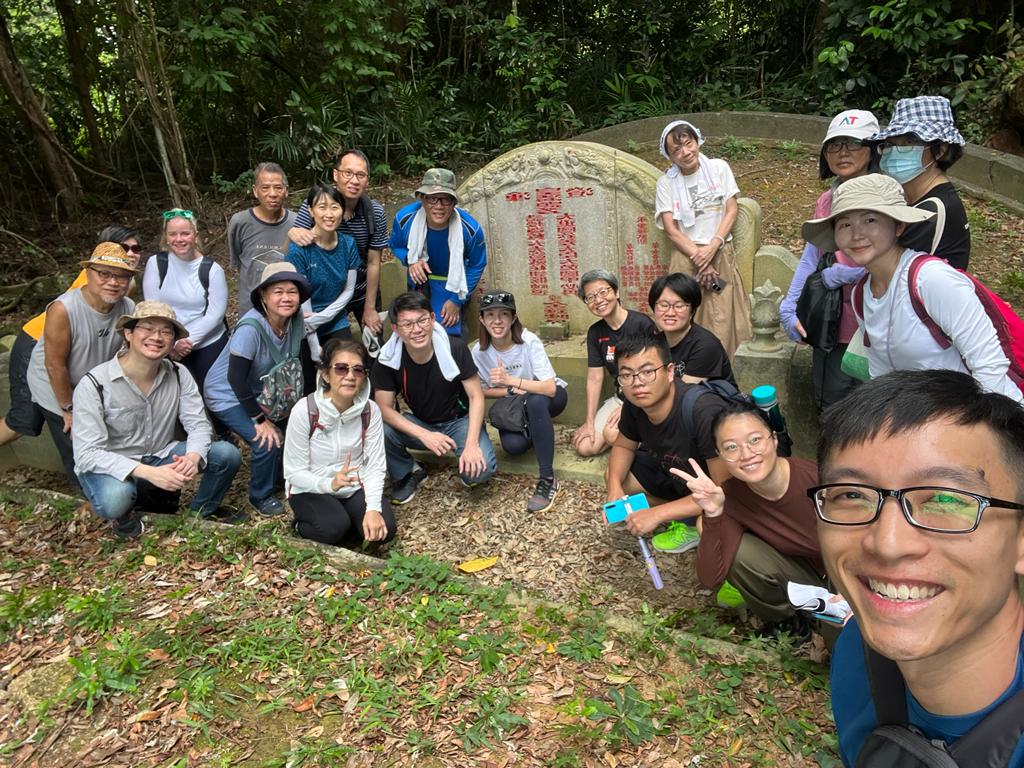
The grave of Tan Kim Ching. Kapitan Cina, Special Envoy in the Siamese court, scion of Tan Tock Seng
This blog post is extracted and adapted from a 2012 issue of Nature Watch. with thanks to the Nature Society of Singapore especially, Dr. Ho Hua Chew. Coming up “ The Spirit of Bukit Brown” by Ilsa Sharp.
A stopover at the the triple Wee tombs with a matriarch buried in the center flanked by her son on her left and daughter in law on the right. This was to familarise the group on material culture and what it represents, from protection to insurance for future descendants to be taken care of.
Catherine drew attention to the magnificent trees surrounding the junction of Hills 3 & 2 & 5, hosting birds nest ferns and bats.
We began proper at the grave of Tan Chor Nam aka Tan Ah Chye, founder member of Tong Meng Hui, and who subscribed to Sun Yat Sen’s vision of a Republican China. His grave marked by colourful crotons in its surrounds.
As we turned into another corner, the cluster of Cheang Hong Lims’ family, all relocated from the family burial grounds in Queenstown, probably to build our first HDB estate. Fabian spoke primarily about CHL and his beautiful and intelligent eldest daughter Murial who was made the executor of his vast estate and fortune, the subject of family feuds and infamous court cases.
Passed by the Instagram-able , Sikh Guards tomb, with a mention of the practice of “live” graves. And proceeding to Tan Boo Liat great grandson of Tan Tock Seng, and his legacy that continues the family tradition of philanthropy: the villa on a hill at Pender Road, he built in memory of his grandfather and named Golden Bell, meaning Kim Ching. A fervent advocate to ban the sale of opium, the scourge of addiction among the already impoverished coolies, he set up rehabilitation centers to help them kick the habit.
Tan’s neighbours are the triple Pang tombs, with husband and wife in the center, flanked by both his grandmother and her mother. They must have been close. His grandmother had vowed to be vegetarian, in exchange, the “gods” were to ensure that every member of the Pang family, survived WWII and came back safely, and they did. She is buried as a nun in a sitting position.
As we walked by Oh Sian Guan’s beautifully carved grave – he is the great grandfather of Kevin Kwan who gave us Crazy Rich Asians – we stood a minute’s silence, for Richard Hu our longest serving finance minister who passed away the night before. He is also part of the extended family of Ohs, Kwans’ and Hus’.
We ended officially at the grave ofTan Ean Kiam, philanthropist, founder member of the gentleman’s club Goh Loo – My Humble Abode – who died in the first year of the war, of a heart attack, or was it outbreak, to see all that the Chinese businessmen and many of them bankers, had built up in the economy, just decimated by the Japanese in the war.
He penned his own epithet. loosely translated:
“It doesn’t matter where I am buried
When the coffin covers me, that is my quilt
I am home.
It is a homage and comfort to all who had battled seas to arrive in Sinchew, Selatpor – old names for Singapore – and never made it back to the motherland.
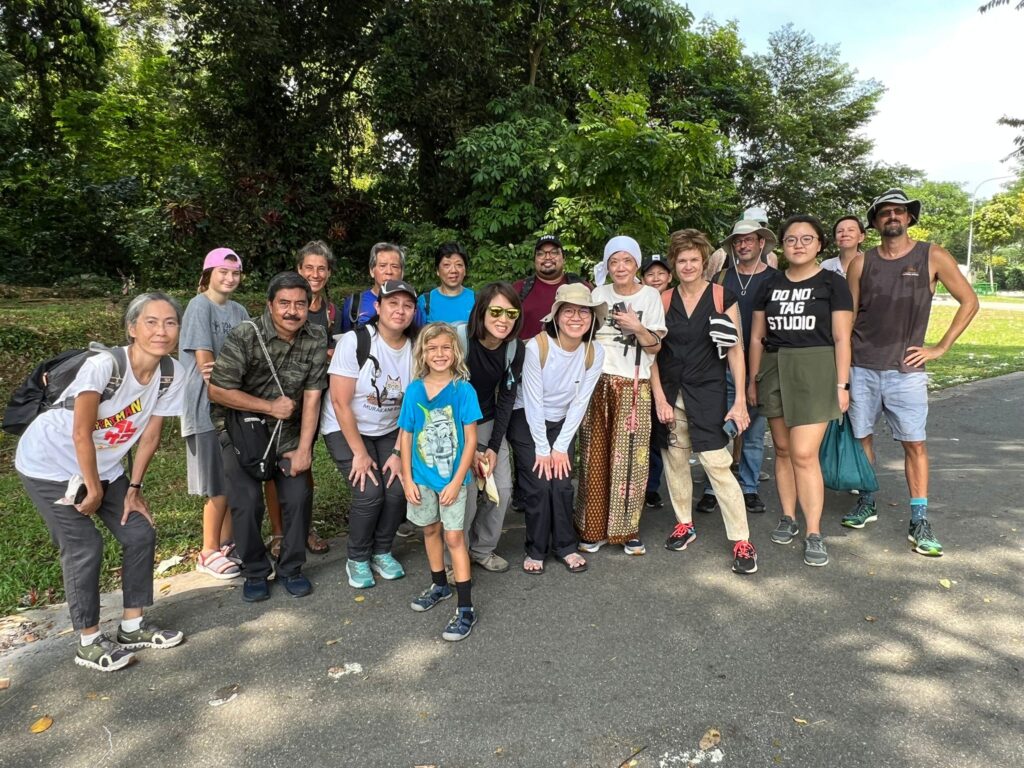
Thanks for coming and being such a great group of participants, especially the boy who kept me occupied while Fabian held court.
A guided walk to the rarely traversed hill 4 saw a turnout of 20 enthusiasts, some repeat customers, but the majority were first timers.
Our passing stop was the tomb of Tan Chor Nam, enroute to Hill 4, where Fabian explained the importance of the man who was the founder member of the Tong Meng Hui, the revolutionary arm of Sun Yat Sen, widely acknowledged as the founder President of the Republic of China.
At Hill 4, we had to abandon visiting the Tan Quee Lan cluster, because the route was cut off by too many fallen branches.
And so we proceeded to the Lim cluster to Chong Pang and his story of escape by sea during WW2, ship sunk, fortunately he was rescued, but unfortunately found himself back on the island, forced to serve in the Overseas Chinese Association, (OCA) which was essentially the Japanese propaganda machinery.
Much vilified by his own, was he like Lim Boon Keng who served as head of OSA, vindicated, after the war was over? Join us at our next guided walk to Hill 4 to find out and also find out what happened to his first family after he took a second wife.
The beautiful tomb of the coloured mosaic chips – “jian nian (剪黏)” – was next. Lovingly cleaned and glued back by a brownie over the last weekend. This is the tomb of the five cats, all decorated in a myriad of scattered colours. For an example of a finely restored mosaic chips, look no further than the roof tops of the Hong San See Temples at Mohamed Sultan Road, which received, a UNESCO award for restoration.
From 5 cats, it was just two stops over to Wong Chin Yoke, who on a covert operation in Indonesia was betrayed and killed by Japanese forces during WWII. His remains returned after the war, and he was given military honours at his funeral. Guarding his grave are two life size Sikh Guards.
From there, we moved to the end of Hill 4, adjoining the big bungalows of Caldecott, and visited with two luminaries from our early past,
At the grave of Cheang Hong Lim (CHL), Fabian pointed out how the tombstone was different from the shoulders, which were deep grey and carved elaborately. That’s because CHL was reburied from his family burial grounds in Queenstown area. Once the richest man on the island, he too, had to move house. His vast fortune was amassed from the misfortunes of addition, and many were coolies who could ill afford a opium habit. Yet he was generous to a fault, any appeal for charity would not be turned down. In the end, the question was asked, was he seeking redemption?
Tan Kim Ching, the eldest son of Tan Tock Seng was the last stop. What greater contribution to the then community of the disfranchised and the poverty stricken, the gift of a pauper’s hospital. A hospital that has grown, through the continued contributions of his descendants from Tan Kim Ching his son to Kim Ching’s grandson Tan Boo Liat et al. On his tombstone, Tan is honoured as a special envoy of the King of Siam. It is through a meeting between him and George Henry Brown, that led a widowed governess into the Siamese court to teach the children of King Mongut, the inspiration for the musical “The King and I ”
The brownies have visited the descendant of Tan’s second family, a wife bestowed on him by the King no less. And at the descendants house, which is a line from the daughter of Tan, we saw the jade beads that sometimes appear on the formal portrait of Tan Kim Ching. Unlike, CHL, Tan’s titles from the Manchu Court of China was of the second order. But Tan lived in an earlier time before Cheang Hong Lim, who paid for the title of the first order.
Reflection:
As we glimpse into the lives of the very wealthy and prominent leaders of the Chinese community of that time, we look at not only how they made their money from plantations of pineapples, rubber, and property, but also how they spent it -some may have been profligate – but there were definitely the ones who used their reputation, influence and wealth, to build a better life for the poor, a better society, and a better country. We visited with two this morning.
Thank you to the 20 people who turned up, engaged with Fabian and Catherine, asked interesting questions, shared their insights, we enjoyed your company. Please visit with us and other brownies when they explore other hills. We are in our 11th year of guiding walks and we have learned much on our journey with our visitors, and so we do what we do best, we tell stories.
100,000 graves, 100,000 stories.

The escape by sea, the irony of being rescued and sent back to the “fortress” island that fell so ignominiously
Considered the foremost authority on Raffles, the National Library Board has acquired the collection of Dr. John Bastin’s more than 5000 materials. 38 of which have been curated for public viewing on the 13th floor.
The exhibits both showcases and makes accessible NLB’s existing Singapore and South East Asia Collection which “form an important nucleus of works on early Singapore. “ The rare materials collection is conventionally the preserve of academics, perhaps perceived as” high brow” located as such on the 13th floor.
But this collection is curated with ordinary Singaporeans in mind with both the personal – a hand written letter by Raffles to his cousin which more than hints at his displeasure with Farquhar – and the quaint – a book on Malay Poisons and Charm Cures – to the spiritual – an almost complete Malay translation of the the Anglican Common Book of Prayer.
But the highlight must surely be the leaflets which were air dropped in the 50s at the height of the communist insurgency in the jungles of Malaya, in an attempt to “persuade” – both by threats and propaganda – insurgents to surrender peacefully. These leaflets dropped by the thousands and commonplace then, have become rare. I have seen them once in a private collection. The NLB rare gallery showcases three pieces.

A 1955 Chinese New Year “special” designed to tugged at the heartstrings and homesickness at a time of celebration (photo Catherine Lim)
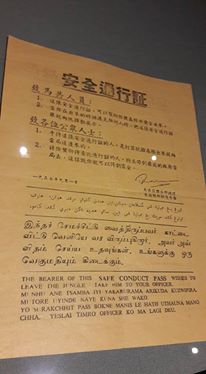
Leaflets in 4 languages which provided “safe conduct” upon surrender. An indication that the communist insurgency had support from all ethnic groups ? (photo Catherine Lim)
Other Highlights:
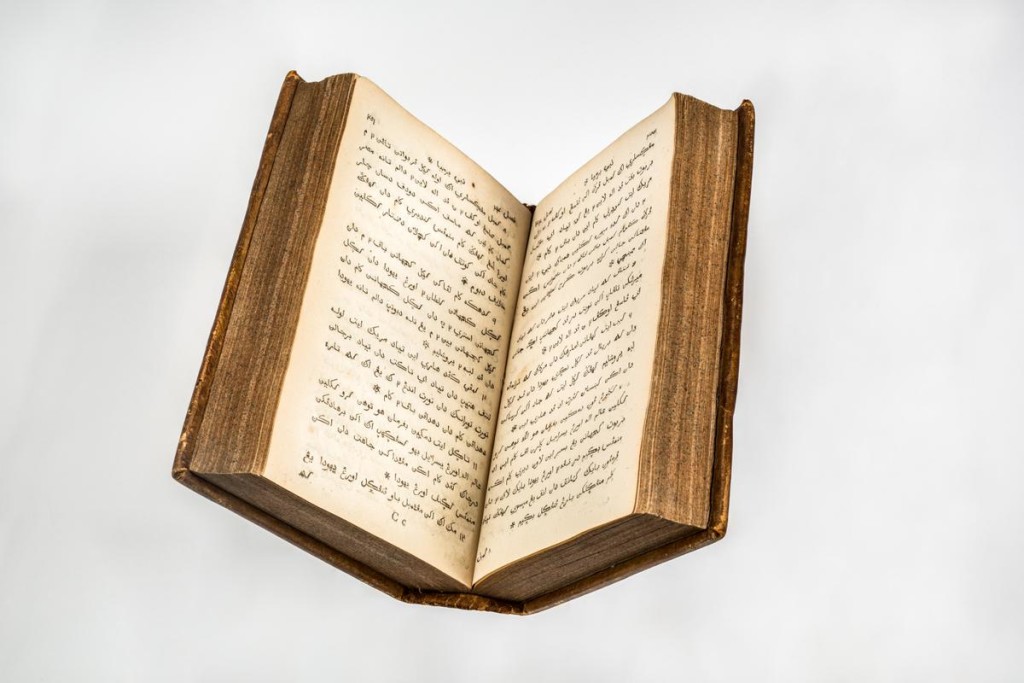
Treasures of the Rare Gallery – Al-Qawl al-atiq iaitu segala surat Perjanjian Lama ,Old Testament Bible in Malay (photo NLB)
Exhibits on Java, Sawarak , Sumatra written by the “colonial masters ” stationed here, a reminder that Singapore was part of the “Straits Settlements”

Thirty-two such silhouettes of different types of Malaysian people of the 20th C from “Shadows in The Malay Peninsular” by W.G. Stirling, London 1910 (photo Catherine Lim)
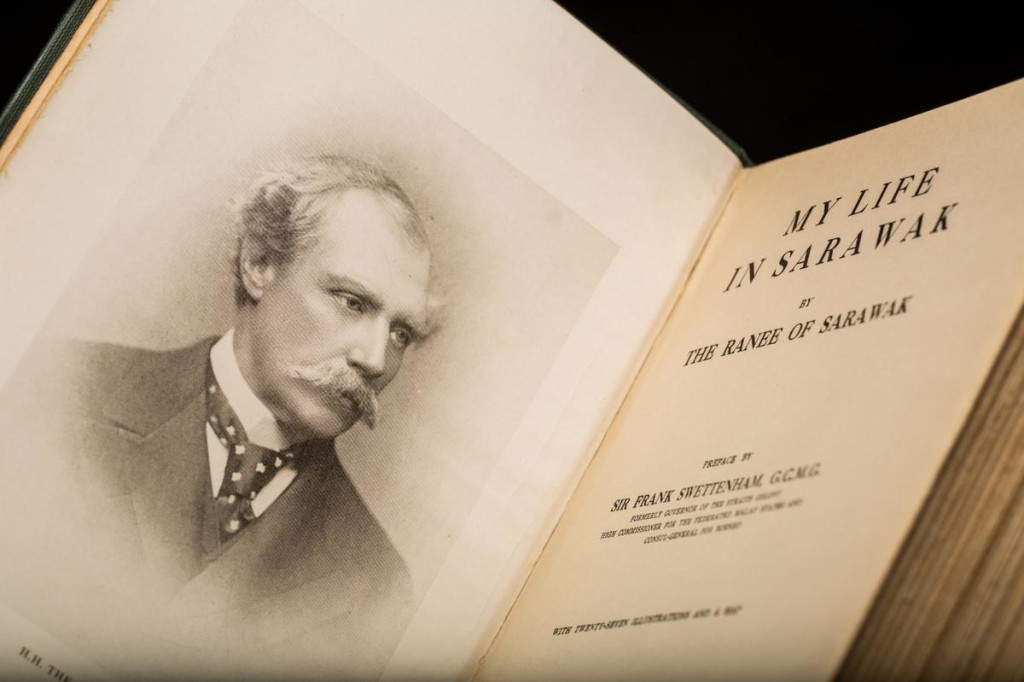
Written by Margaret Brooke “Ranee of Sarawak (1849-1936) and consort of the Sir Charles Brook. The copy on display establishes the social connection between the Brookes and Swettenham (Governor of the Straits Settlements). Swettenham refers fo Ranee as “Margaret darling” in 2 handwritten letters (photo NLB)
Expressing Raffles passion for the biodiversity of the region.
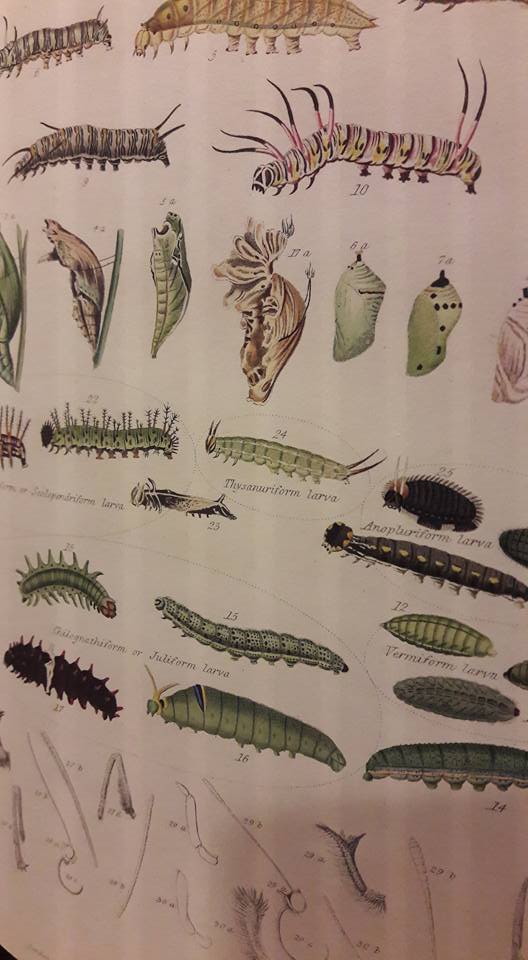
From “Descriptive catalogue of the Lepidopterous insectsnby Thomas Horsefield London, 1828/9 (photo Catherine Lim)
And lets not forget, exhibits which clearly reminds us of the collector’s primary interest, Raffles himself.
Of interest for further study an exhibit of : a bill introduced to the British Parliament on 18 June 1824 to ratify the Anglo-Ducth Treaty of 1824 which concluded longstanding territorial and commercial disputes between Britain and Netherlands. A valuable source of information of how the two rival colonial and maritime powers decided on how to carve out their colonies in the region
As a collection, its importance is to give visitors a flavour of our past, providing historical context in print that covers different facets of political, social and community engagement at a personal level.
If there is anything more the NLB can do to get more Singaporeans to “embrace” the rare collections , is perhaps for this collection to serve as an inspiration for other activities which could revolve round art and story imagining of a past which helped defined who we are today.
Guided tours of this collection will be held monthly between July and December. Do check listings here
———————————————————————————
Catherine Lim is co-editor bukitbrown.com
The tomb of Wee Theam Tew is yet another significant discovery made by tomb whisperer, Raymond Goh in the Greater Bukit Brown. Wee Theam Tew was a lawyer and died at the age of 52 due to his failing health. His tomb has inscriptions in both English and Chinese, and a set of poetic couplets, which is believed to enhance the livelihood of the deceased’s family. This one reads:
坐山脈正派
向水源當長
添秀山為景
籌華地作玩
This is how one member of the Heritage Singapore – Bukit Brown Cemetery Facebook community, James Koh translated the couplets to English and added his interpretation of the significance of the words :
The mountain sits with honorable aura
The river flows with abundance
The hills add charm to the landscape
The earth becomes pleasing to the eye with accumulated lustre
He adds that the couplets “represent the things which Mr. Wee wish to bestow on his descendants — reputable status, decent lineage and legacy, strong prospects, and a happy home.
What makes these couplets interesting is, in each sentence, there is supposed to be a stop after the first two words. For e.g., 坐山 ¶ 脈正派. But the second and third words actually form a noun which is related to Mother Nature — 山脈, 水源, 秀山, 華地. This, in turn, displays Mr. Wee’s brilliance in Chinese literature.”
We are assuming these were either written by Wee or chosen by Wee.
Do join the discussions in the Heritage Singapore – Bukit Brown Cemetery Facebook group page, a platform for all members like James Koh, to learn, as well as contribute and share their knowledge in all things related to heritage, habitat and history.
A photo essay by Simone Lee
“I was a little apprehensive at the beginning. Even as a Malaysian, I’ve never heard of anyone raving about a visit to Taiping. But while we were there, I fell in love…………” Simone Lee
Romancing Taiping 1 continues with part 2 as Simone Lee takes you through to sights and sounds from cemeteries – of course – to temples and museums. Hokkien Cemetery

(from left to right): Stairway to Ng Boo Bee’s ‘residence’, mythical creatures, tomb guardian (photo collage Simone Lee)
The most valuable tomb in Taiping belongs to Ng Boo Bee. Penniless when he left China, he became the wealthiest man in Taiping from running tin mines, opium farms and construction. He was the first contractor to the British, building the first railway line in Malaya running from Taiping to Port Weld. He made many contributions to society during his lifetime. He built schools in Perak and China, public fountains, shophouses, donated land to the Hokkien Association and more. In fact, he built half of Taiping and owned many properties and plantations in both Perak and Penang. At death, his wake lasted for about 2 months to allow time for his friends to travel, some from as far as England. The entire town of Taiping shut down to join the procession, which took 4 hours to pass his house. Today, he rests on a 3-level tomb accompanied by guardian generals, lions and other mythical creatures, which showcase his wealth and influence while he was alive.
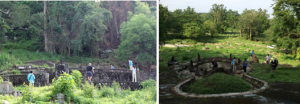
– (Left) As you walk up the hill towards Ng Boo Bee’s majestic tomb, you’ll see the 3-levels of the stone platform, which looks like a fort (photo by Bianca Polak) – (Right) The View from the back of Ng Boo Bee’s tomb (photo by Raymond Goh)
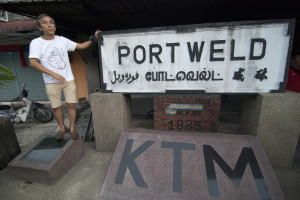
Our guide Ah Kew explains Ng Boo Bee built the first railway in Malaya for the British at Port Weld (photo Simone Lee)
Kwantung Cemetery Kwangtung Cemetery contains burials mostly of Cantonese and Hakka residence.
Taiping War Cemetery The fallen soldiers who defended Malaya from the invading Japanese forces were interred in this cemetery. There are 3 sections of the cemetery; the Christians (on one side of the road), the Muslims and Indians (on the other side of the road).

(from left to right): A tombstone for an Indian soldier, view of Christian side of the War Cemetery, and a tombstone for an English soldier (photo Simone Lee)
Amongst over 850 tombs are tombs of 4 volunteer soldiers. Three of them, Lim Poh Ann, Tang Bee Choon and Ong Kim Sai, were sent to fight in Singapore where they died. After the war, their bodies were returned and given a soldier’s burial.

– (Top row) The 4 fallen soldiers who volunteered to defend our land. – (Bottom row) Lim Poh Ann, Ong Kim Sai and Tang Bee Choon were sent to Singapore, where they were killed in action (photo Simone Lee)
As more immigrants were brought in to work in the booming new town, many temples were built. A temple which has stood the test of time is the Sam Wong Yah temple. The temple was built by Loke Yew, a millionaire and philanthropist who came to Singapore to seek his fortune. He started work at a provision shop at Market Street until he saved enough to open one of his own. He then travelled to Taiping to explore the tin mining businesses. However, he did not do well and was soon broke. He sought shelter at the hut housing the Sam Wong Yah deities. One night, in a form of a white figure, he dreamt of the deities advising him to go further south to strike it rich. And strike it rich, he did. He returned to Taiping to build the temple around the hut where he had taken shelter.
In Singapore, a road was named after him (Jalan Loke Yew, opposite of the Peranakan Museum at Armenian Street) in honour of his contributions while the Cathay Gallery at The Cathay (founded by Loke Yew) showcases the history of the building and the Loke family.
Matang Museum aka Ngah Ibrahim Mansion Ngah Ibrahim succeeded his father, Long Jaafar as the Malay chieftain of Larut. He fortified his mansion by building thick brick walls around it, resisting the violence between the Ghee Hin and Hai San fights. Part of the wall was damaged by a Japanese war plane which crashed into it. In the mansion are stories and artifacts belonging to Ngah Ibrahim and showcased what the mansion was used as after Ngah Ibrahim was exiled in Seychelles. He was never allowed to return and died in Singapore (1887). In 2006, his remains were exhumed from Masjid Al-junied and reinterred in the compound of his grand old mansion which now is the Matang Museum.
Other Attractions

Taiping Lake Gardens, originally a mining ground, is the first public garden in Malaya since it’s conversion in 1880. The beautiful 120 year old rain trees line the road around the lake have been a hot subject as nature lovers fight to save them from urban threats. (photo Simone Lee)
Upon our return in Singapore, a fellow member of the Heritage Singapore – Bukit Brown group asked, “did you guys do anything else in Taiping but eat?”, questioning the amount of food postings (and food) we had on the our Facebook pages. We certainly did and visited many more places apart from the ones featured in this write-up but there is simply too much to write in just one post. Besides, the best way to learn more about a place is to be there in person. There are many more that we didn’t get to explore. We certainly fell-love with Taiping’s charm and hope to go back in the near future. If you do plan to visit Taiping, do contact Lee Ah Kew through http://ahkew.blogkaki.net Ah Kew is a freelance writer and field historian, whose knowledge and collection of folk stories would enhance your experience at Taiping. Ah Kew’s article on the Brownies 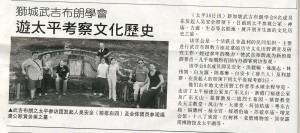

***********************
Editor’s note: If you have enjoyed Simone’s blog post and photo essay, do leave a comment and encourage her to do more. She is the “official” brownie travel concierge
“Ullambana” Festival by Bukit Timah Seu Teck Sean Tong @ Tangling Halt.
by Sugen Raniah
The Ullambana Festival is observed and celebrated by the Buddhists during the Seventh Lunar Month. The Sanskrit term, ‘Ullambana’, refers to the compassion for all beings suffering in the realms of misery. The observance of this festival is based on a discourse by the Buddha – where Maudgalyayana, a disciple of the Buddha, discovers that his mother, Lady Niladhi, had been reborn into the realms of misery. The troubled Maudgalyayana then seeks the Buddha for help. The Buddha advises him to make offerings to the Sangha, as the merit of doing so would help relieve the suffering of his Mother, and that of other beings in the same state.
Here in Singapore, it is a common sight for Teochew sian t’ngs (temples) to perform these rituals during the seventh lunar month. I observed and documented the Ullamabana Festival at Tanglin Halt Market and Hawker Centre by the members of Bukit Timah Seu Teck Sean Tong.
There are three temporary ceremonial altars set up in the tentage – the main altar of the three Buddhas, the altar for the Patron Deity, Du Di Gong and the last for Da Shi Ye (King of Ghosts). Offerings of dried goods and drinks, vegetables, a variety of meat and paper offerings are assembled in the centre of the tentage. Here associate members of the market and members of public are invited to offer joss sticks to the wandering spirits. There are also smaller areas around designated for the spirits for ‘lodging’, ‘washroom’ and ‘leisure’ purposes.
Unlike the elaborate Taoist salvation rituals by Xuan Jian Dian, the Buddhists embrace the recital of Ulka Mukha Sutra. Men, draped in red vestments, are represented as the Sangha (the community of disciples). The Sutra recited is an amalgamation of the mind, body and mouth. Mind in absolute contemplation, with hand gestures of the mystical Mudras and together with the recitation of esoteric words of the Sutras- they invite the wandering spirits to listen to the teachings of Buddha and liberate them from all sufferings. These men sing the Sutra in Teochew and the lyrics are accompanied by beautiful Teochew styled music. It is meant to work like a beautiful charm that draws the spirits to listen and attain liberation.

The ‘Sanghas’ paying homage to the Patron Deity of the market and hawker centre – Du Di Gong (photo Sugen Ramiah)
The day ritual comes to a close with the tossing of longevity buns. The food offerings are then packed and distributed to contributors and friends. Members of the temple take a break before preparing for the dance of the auspicious lanterns later in the evening.
****
Sugen Ramiah a teacher by training, has been observing and documenting Chinese festivals and rituals conducted by temples for the past one and half years.
More on the Hungry Ghost Month from Sugen here and here .
Preamble : Hungry Ghost Festival
Saturday, 26th July was the eve of what is popularly known as the Hungry Ghost Festival, and less well known by its traditional name of Zhongyuan Jie, which in essence is also about honouring ancestors. It takes place at the start of the Chinese 7th lunar month, and it is when the gates of hell open and the spirits of dead are free to wander among the living for a month. To appease them, offerings and entertainment is laid out by descendants at their homes, but also by temples, business and clan associations. This year, the prediction was that hell’s gates will open at 11pm on the eve of the festival.
The Salvation Rituals
At Bukit Brown, devotees from the Taoist temple Xuan Jiang Dian (Heng Kang Tian ) conducted a “chao du” or “salvation rituals” – considered an act of compassion – specifically for the forgotten and lost spirits there.
This is the 3rd year in a row, Xuan Jiang Dian have done this, ever since in fact news of the building of the highway across Bukit Brown in 2011 was announced. Exhumations of the some 4.153 graves which are in the way of the highway are drawing to a close. So there was added interest in this year’s ritual which was covered by our national newspapers. The National Heritage Board (NHB) shared that a specially commissioned video on rites and rituals at Bukit Brown will be uploaded soon to you tube.
A First Hand Account of “chao du”
The ” chao du” ceremony which was witnessed also by Brownies and other well wishers, started at around 8.3opm . It consisted of the setting up of an altar table with offerings at the major junction of the 4 roads in Bukit Brown which leads to Blocks 1, 5, 4 and 3.
The Taoist priests from China, resplendent in their robes, chanted and walked several ceremonial rounds in the area calling upon lost spirits. There was something soothing in their chanting and the air was redolent with the scent of what must have been a hundred lighted joss sticks. Each participant carried 3 sticks each throughout the 40 minute long chanting.
There was a stillness in the air and the smoke and swish of the robes carried the movement of the night. It ended with the burning of paper offerings and just as quickly as it was set up, the devotees packed up and left, with the the candles planted still burning and the last vestiges of the paper offerings smouldering down to embers.
******
Photo Gallery :

Side View : Off site 3 tablets, set up by Xuan Jiang Dian at Bukit Merah Blk 123 for the wandering spirits of Kopi Sua aka Bukit Brown. [right] for animals killed during agricultural activity (prior to it becoming a cemetery)[centre] for wandering souls[left] for animals killed during construction works (photo and caption by Chua Ai Lin)
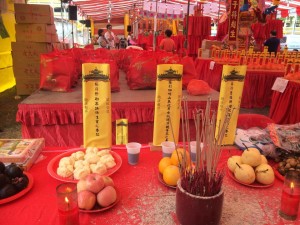
Front View : Off site 3 tablets, set up by Xuan Jiang Dian at Bukit Merah Blk 123 for the wandering spirits of Kopi Sua aka Bukit Brown. [right] for animals killed during agricultural activity (prior to it becoming a cemetery)[centre] for wandering souls [left] for animals killed during construction works (photo Raymond Goh)
Report on Lianhe Zaobao on a ritual conducted last night at Bt. Brown which marked the opening of the 7th month: A group from Heng Kang Tian including 8 Taoist priests conducted the ritual to invite spirits to a salvation ceremony conducted today in front of Bukit Merah View Block 123. The group has been going to Bt. Brown for the past two years to invite spirits from tombs which are not tended to by descendants. The event was attended by Brownies and participants of tours at the cemetery. It was also recorded by the Bt Brown Documentation Team. NHB is currently preparing a 10-15 min documentary on the rituals carried out at Bt Brown cemetery. This will be uploaded to the NHB channel on youtube, “yesterdaysg”, around end next month. (summary by Ang Yik Han) Full report in Chinese:
文物局到武吉布朗坟场 记录“招魂”仪式
王舒杨
联合早报2014年07月27日
今天是农历七月初一,华人传统节日“鬼节”今起开始。昨晚,武吉布朗坟场文史记录小组和国家文物局人员特地到武吉布朗坟场,记录一场由道教团体进行的祭祀仪式。
昨晚约9时,应道教宗教团体玄江殿邀请的八名道长和一名唢呐乐师在武吉布朗坟场进行“招魂”仪式。在道路两侧点亮“引魂”的香火后,他们在锣鼓声中唱诵经文。今明两天他们将在红山景第123座前的道场举行大型超度法会。
数十名积极参与保护武吉布朗文化遗产的公民团体成员也到场目睹仪式。除了这些“武吉布朗人”,不少报名参加坟场导览活动的外国人和游客也纷纷拿起相机拍下这个独具特色的活动。
玄江殿自1996年起多次在武吉布朗坟场举行农历十月初一的“寒衣节”祭祀活动,并从两年前开始在武吉布朗坟场举行七月鬼节的法事,目的是在坟场进行招魂,为他们超度。
根据武吉布朗坟场文史记录小组整理的资料,武吉布朗坟场里的中元节如同一项社区活动,是一种灵界上的慈善事业。信徒所祭祀的亡魂通常与他们没有任何亲属关系,尤其是孤魂。
玄江殿主持陈荣兴(45岁)说,武吉布朗一些坟墓主人没有子孙祭拜,所以希望能为这些孤魂超度。
此外,道家也相信所有生灵皆可超度,而坟墓挖掘过程中伤到蚂蚁等生灵,超度法事也怀有对它们的尊重。
国家文物局目前正在筹备一个10至15分钟长的纪录片,介绍华人社群在武吉布朗坟场的仪式,包括七月鬼节、清明节以及较少人知道的寒衣节。短片料下月底上载到文物局的YouTube频道“yesterdaysg”。
文物局总司长(政策)陈子宇说:“武吉布朗坟场不仅仅是一个埋葬地点,也是华人社群进行祭祖等仪式的地方。我们会记录这些仪式,以继续丰富我们有关新加坡非物质文化遗产的数据库。”
公众可通过在国家图书馆大厦9楼展出的“武吉布朗:记录新知识 开拓新视野”中英文展览,了解武吉布朗坟场上世纪的演变、坟墓设计和民间风俗等。图书馆大厦展览在10月10日结束后,将陆续在宏茂桥、裕廊、蔡厝港和大巴窑图书馆展出至明年1月底。
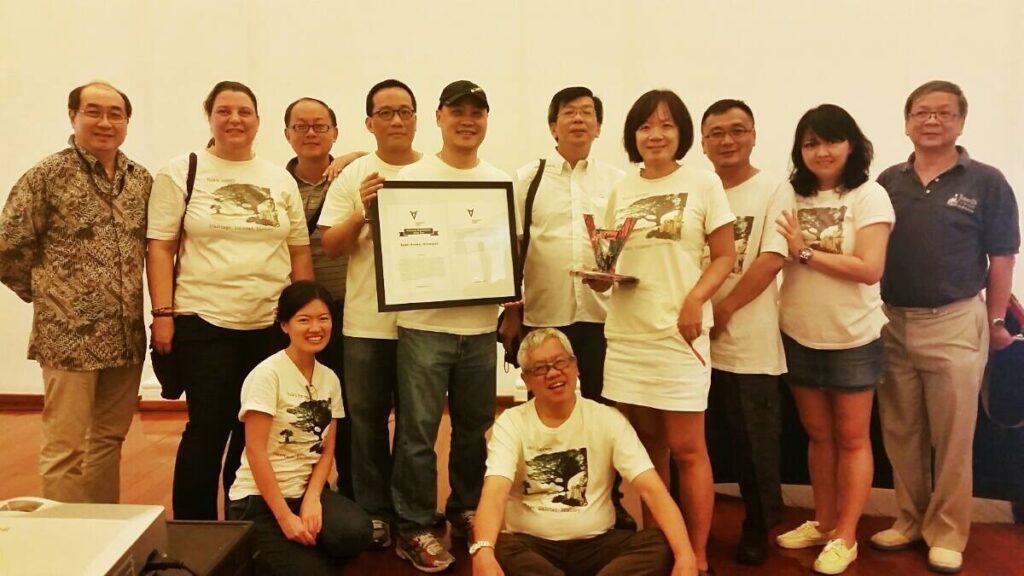
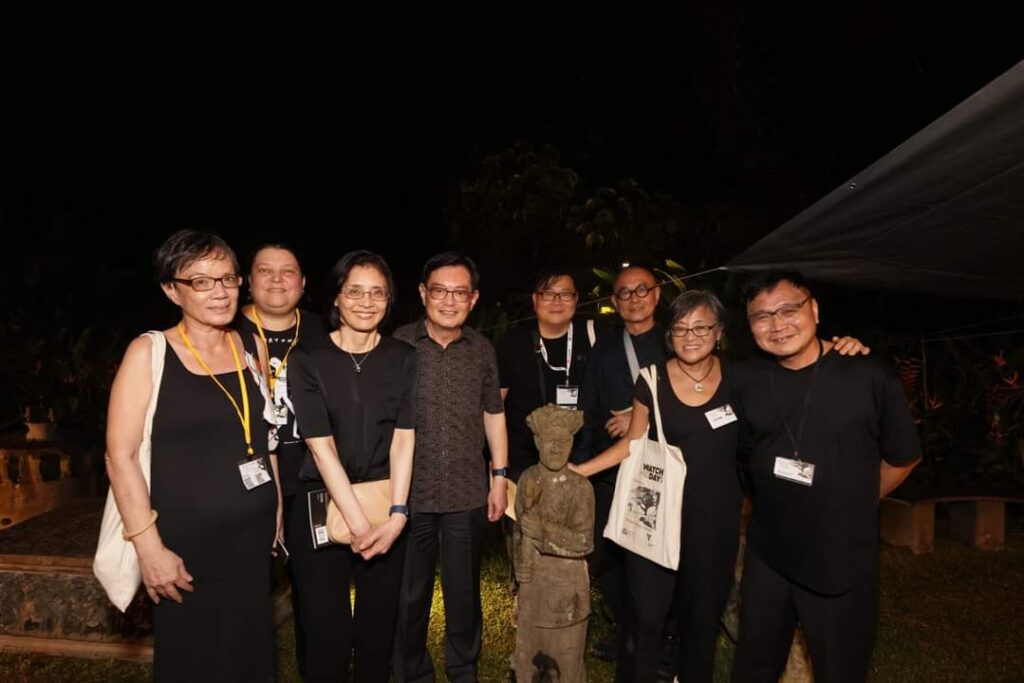
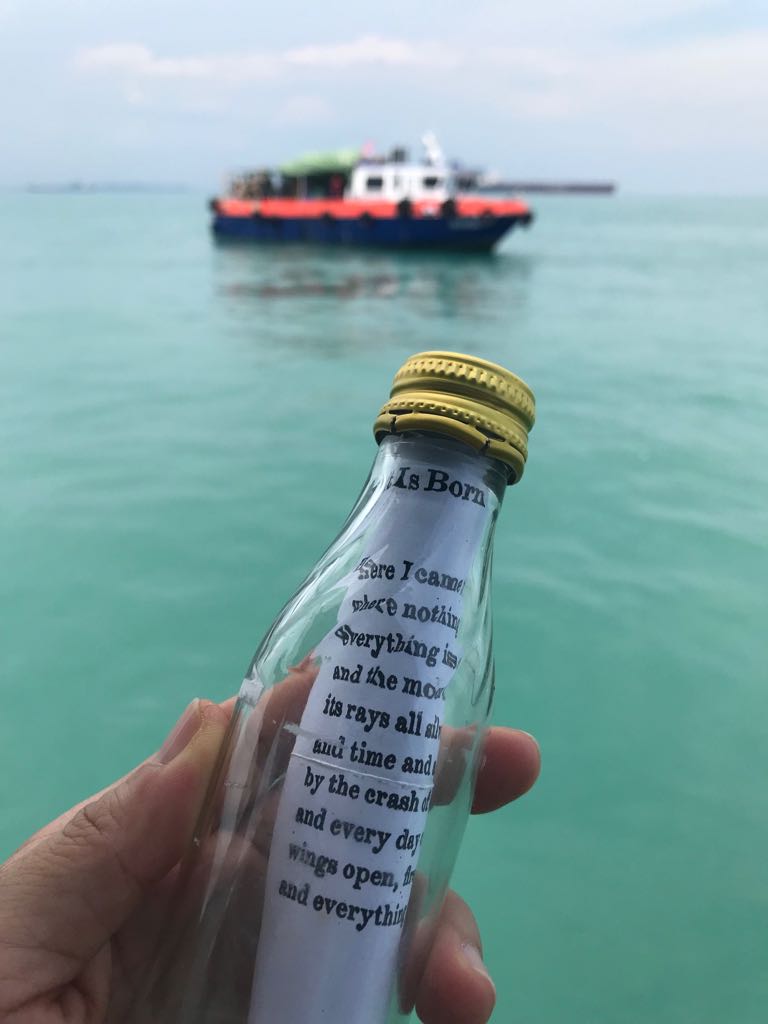

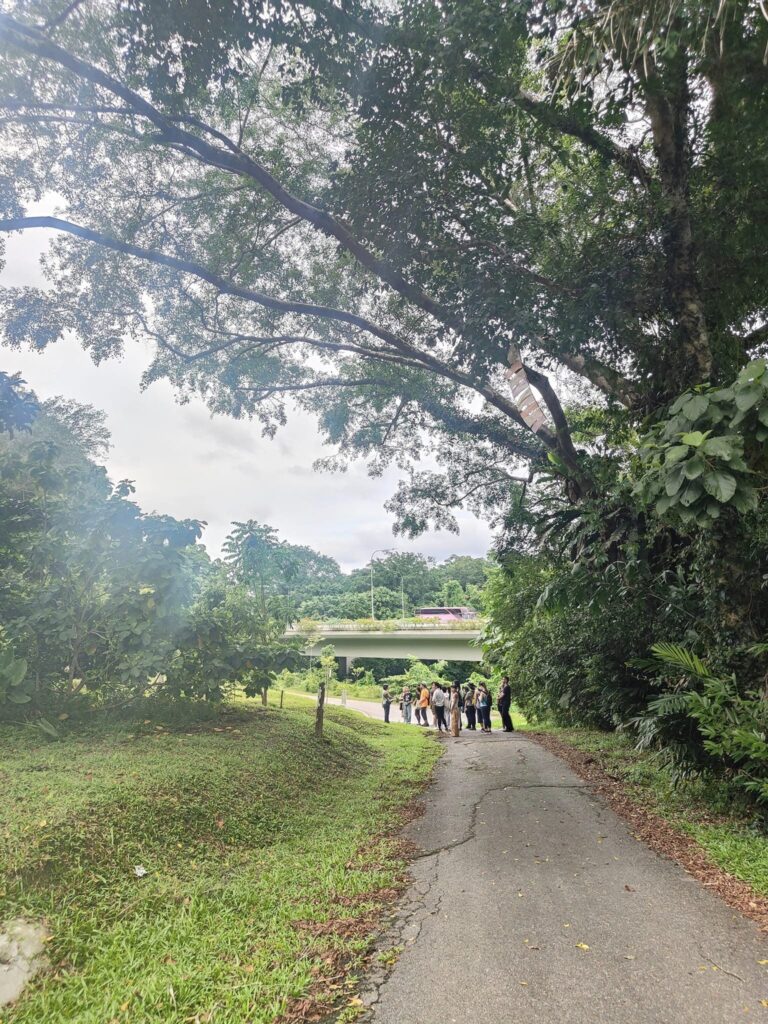


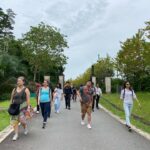
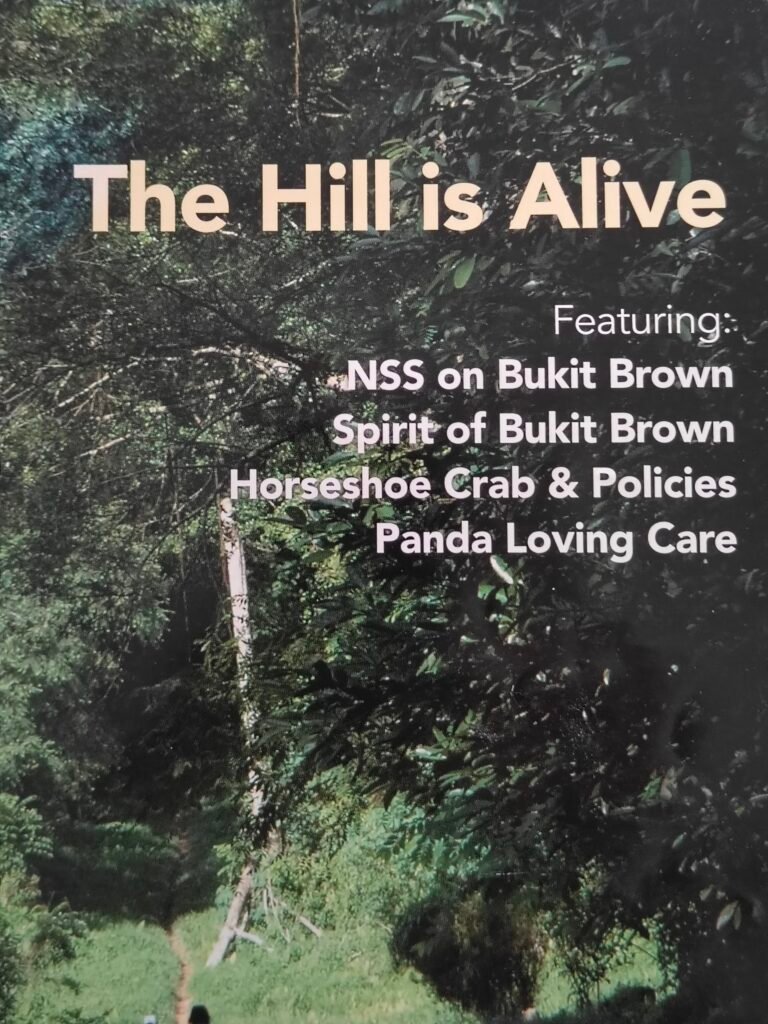


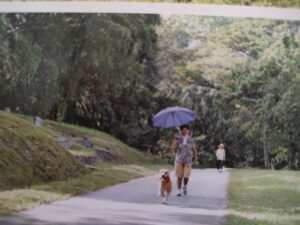

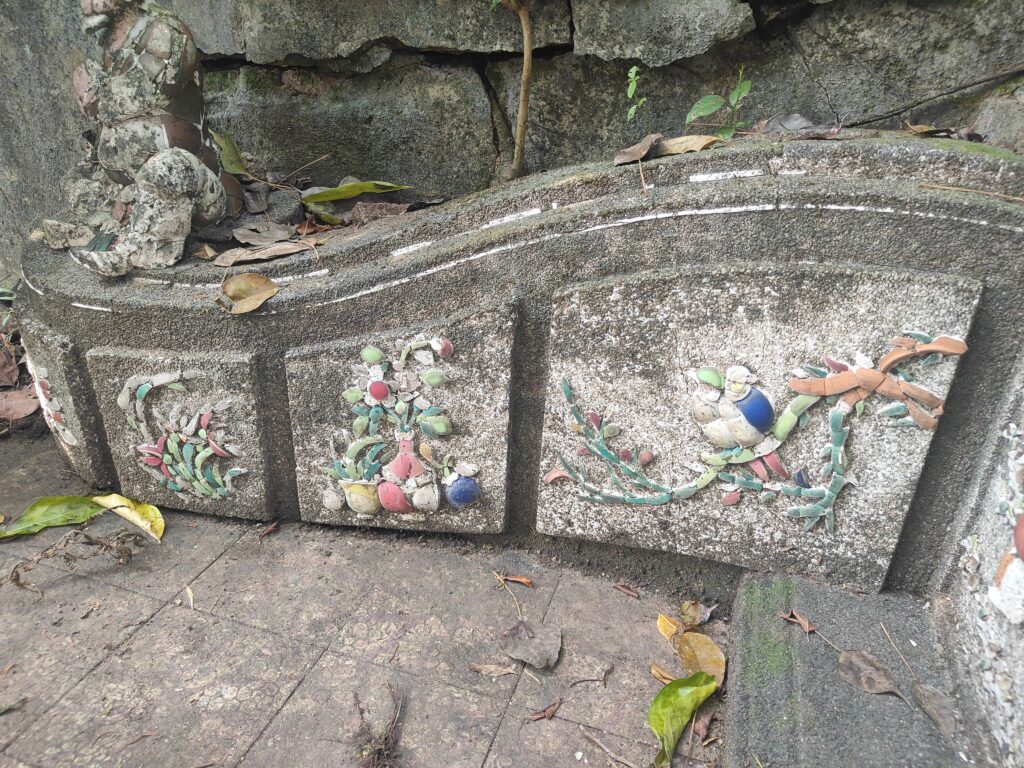
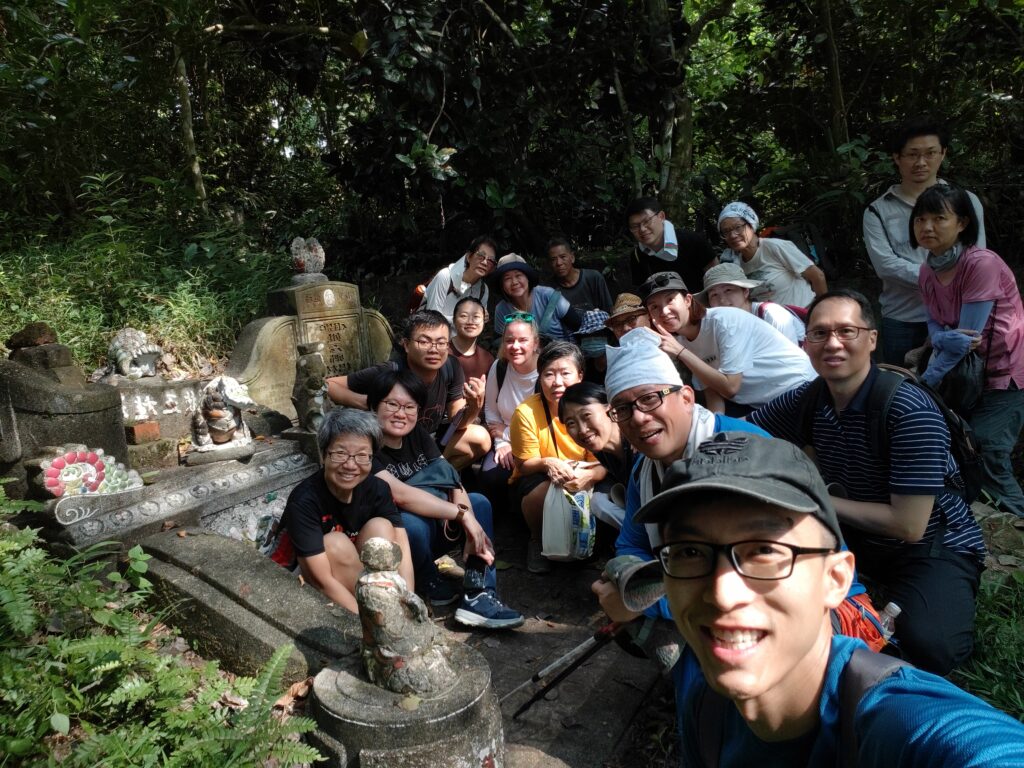
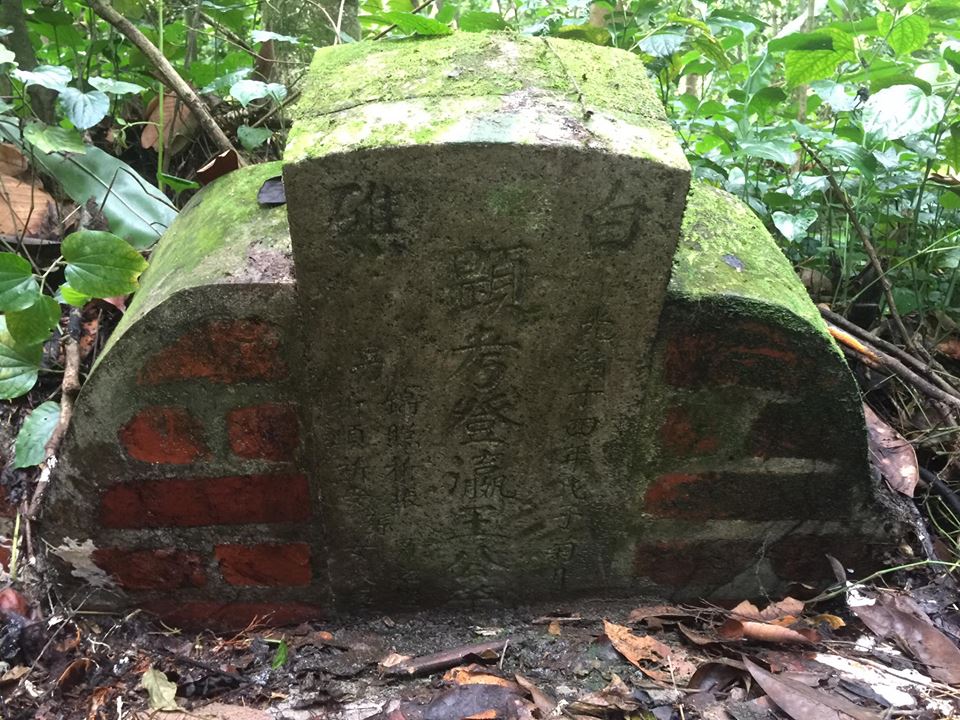
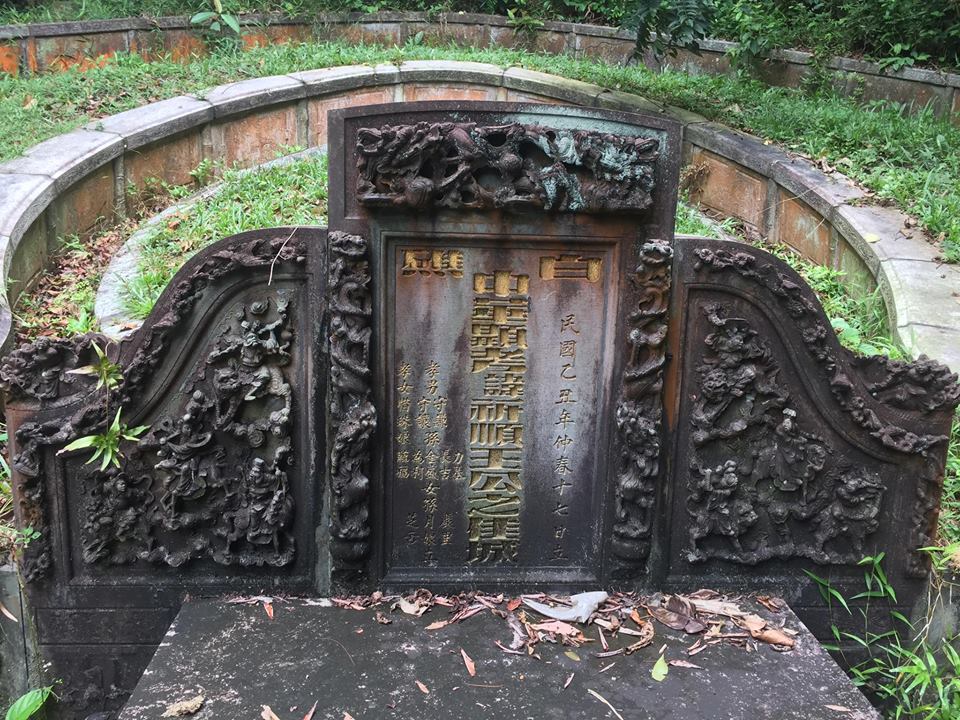
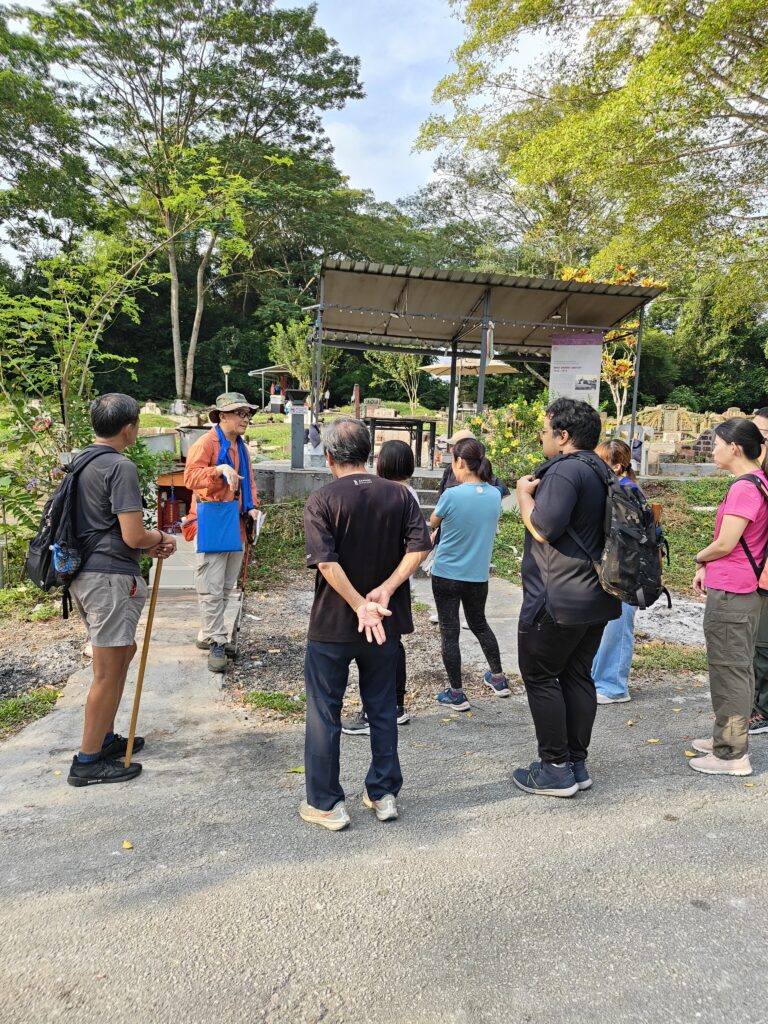

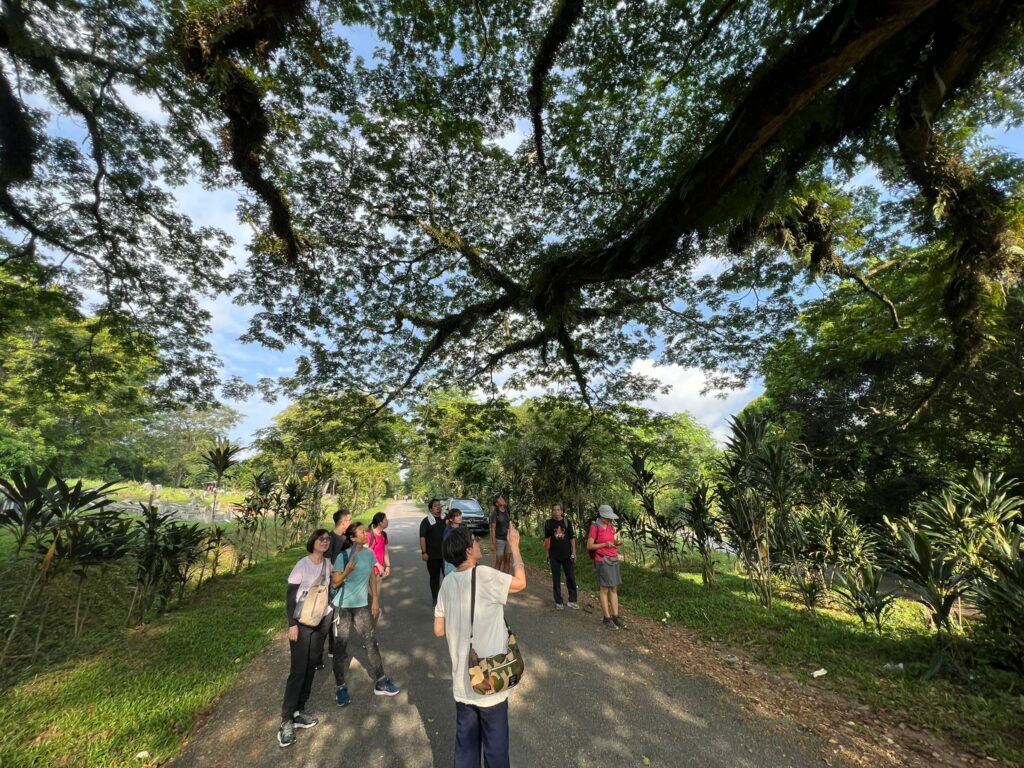

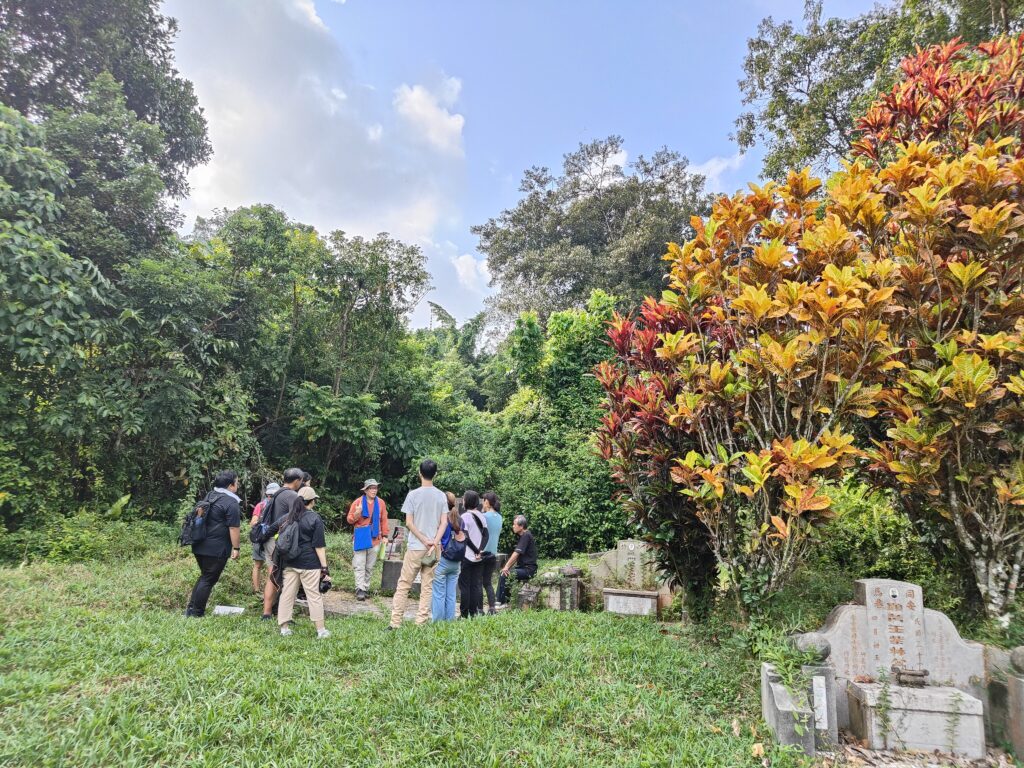
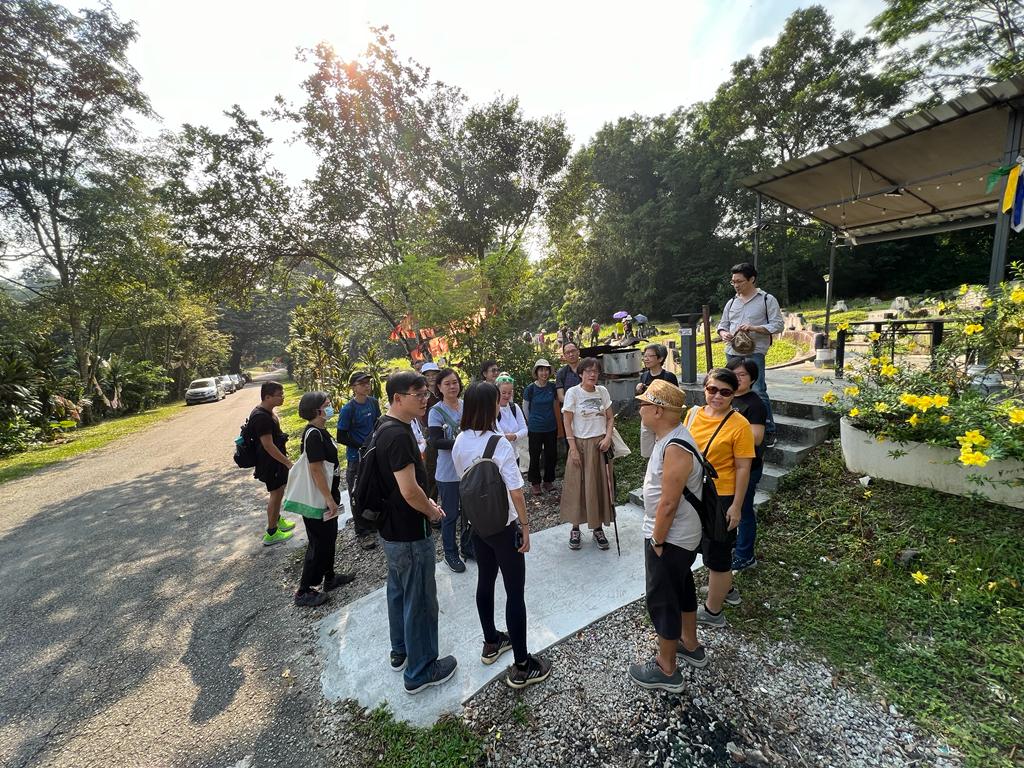
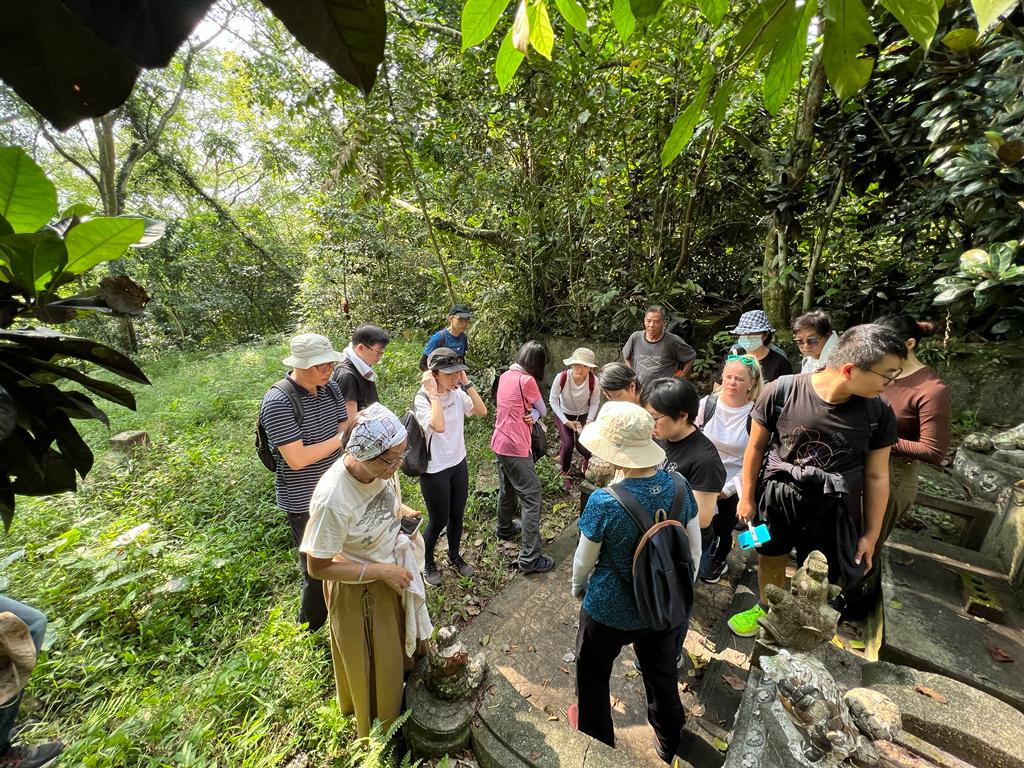
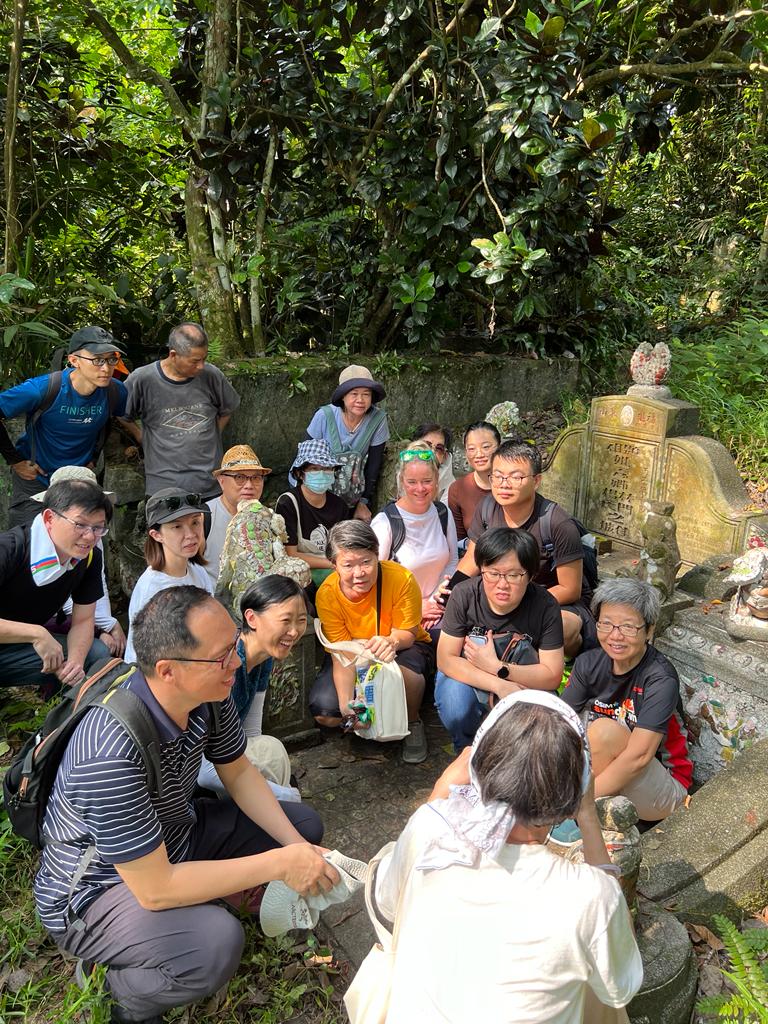
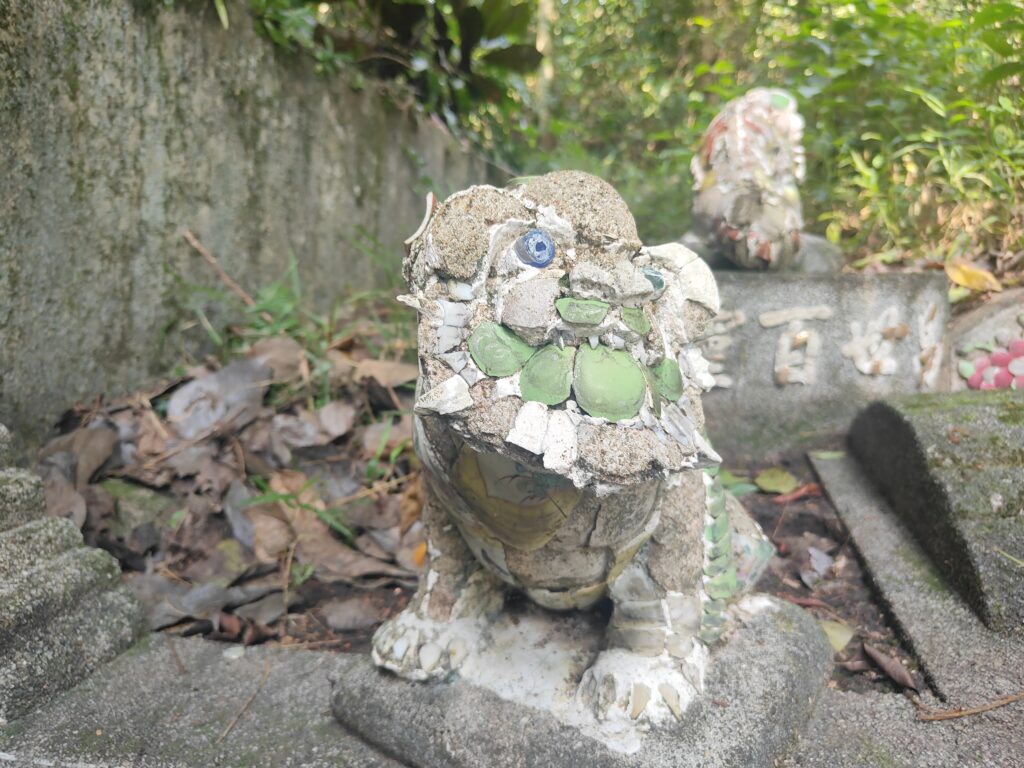
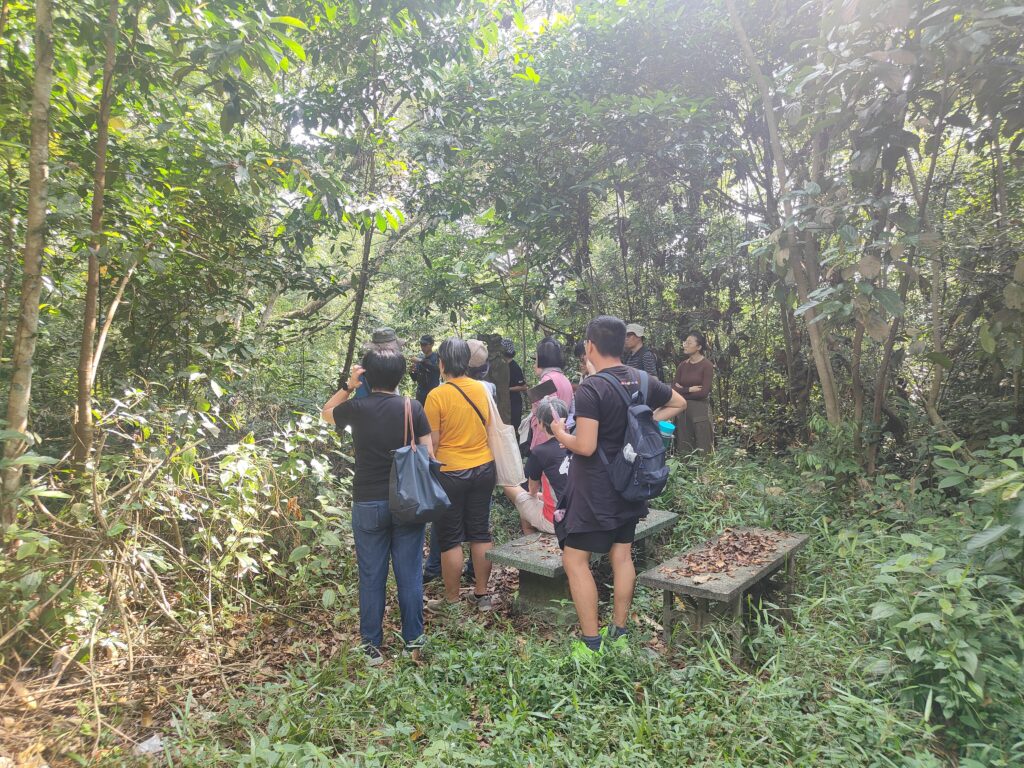
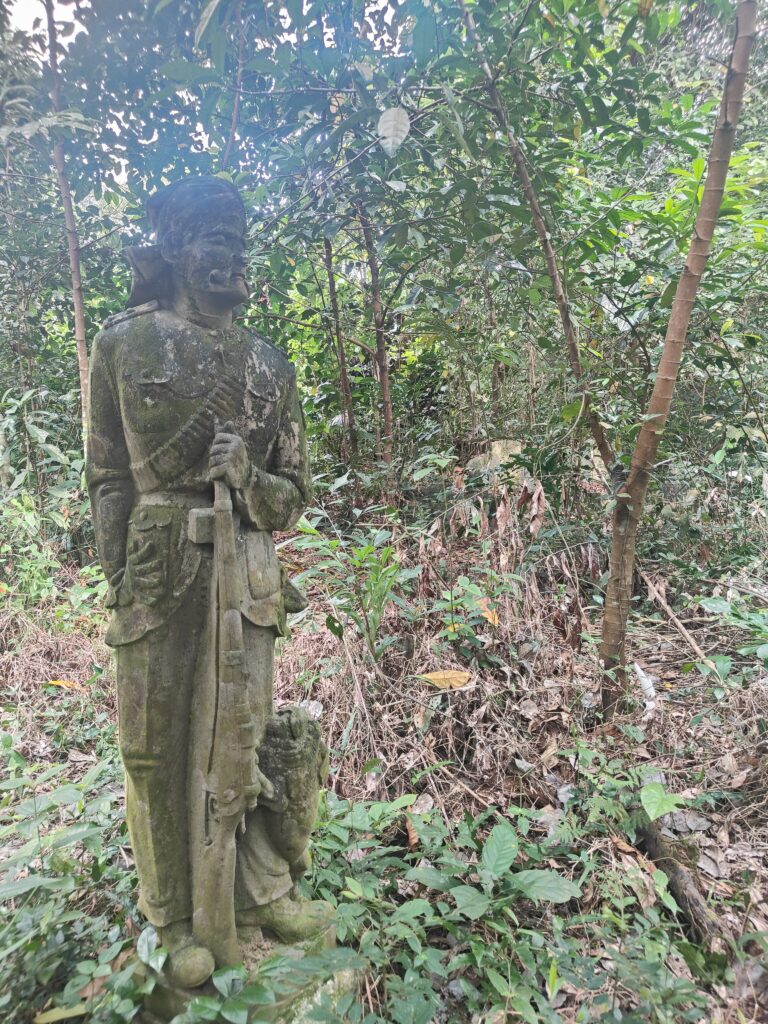

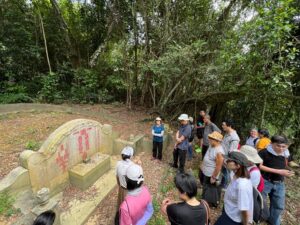
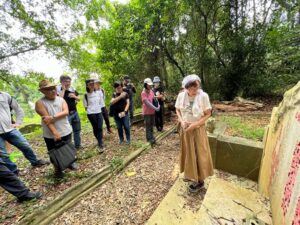
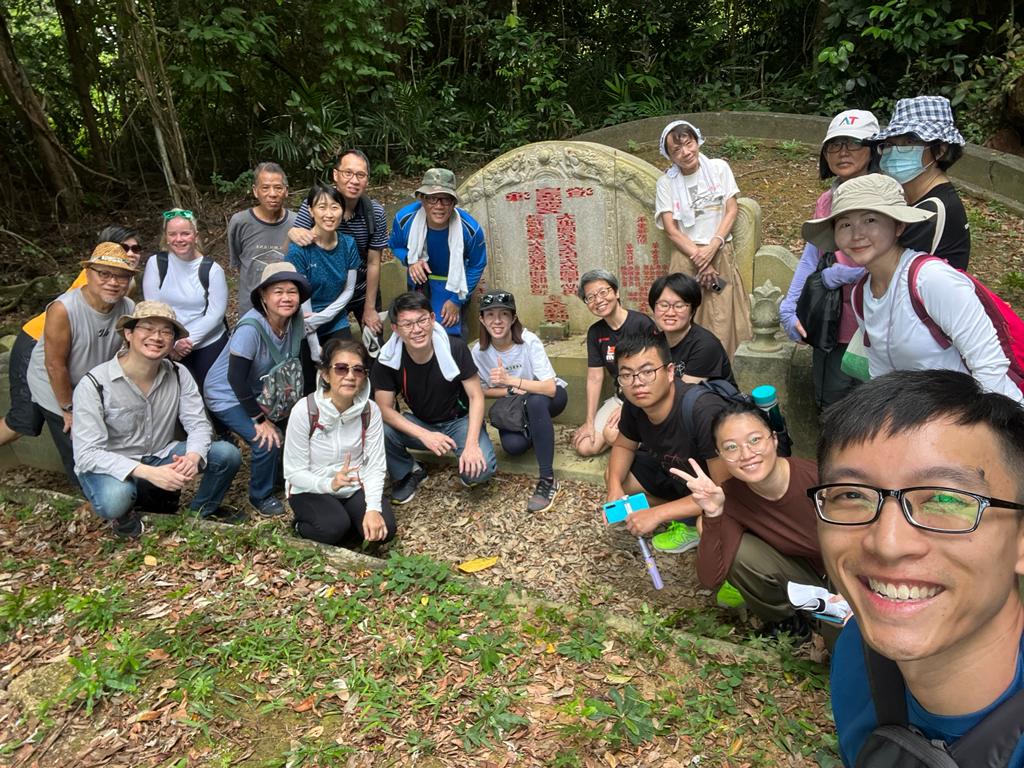
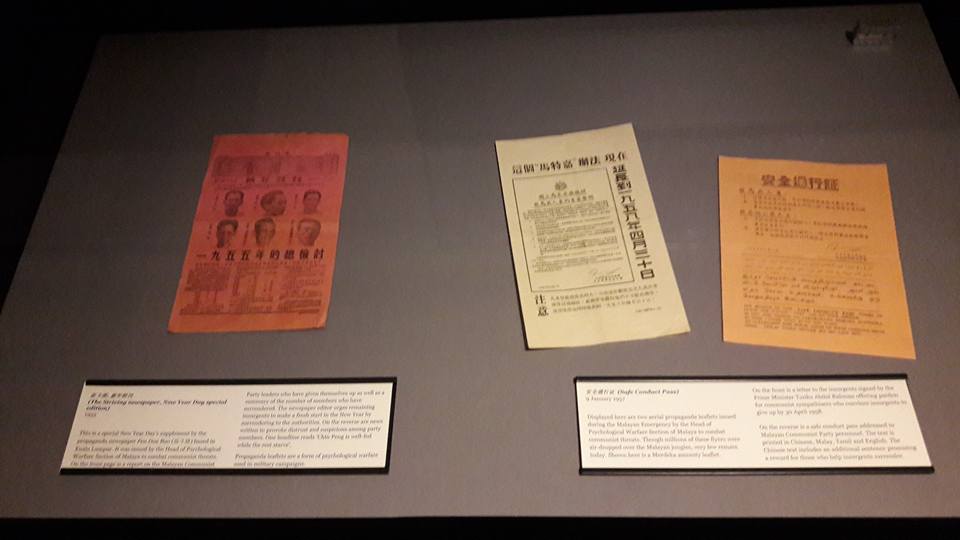


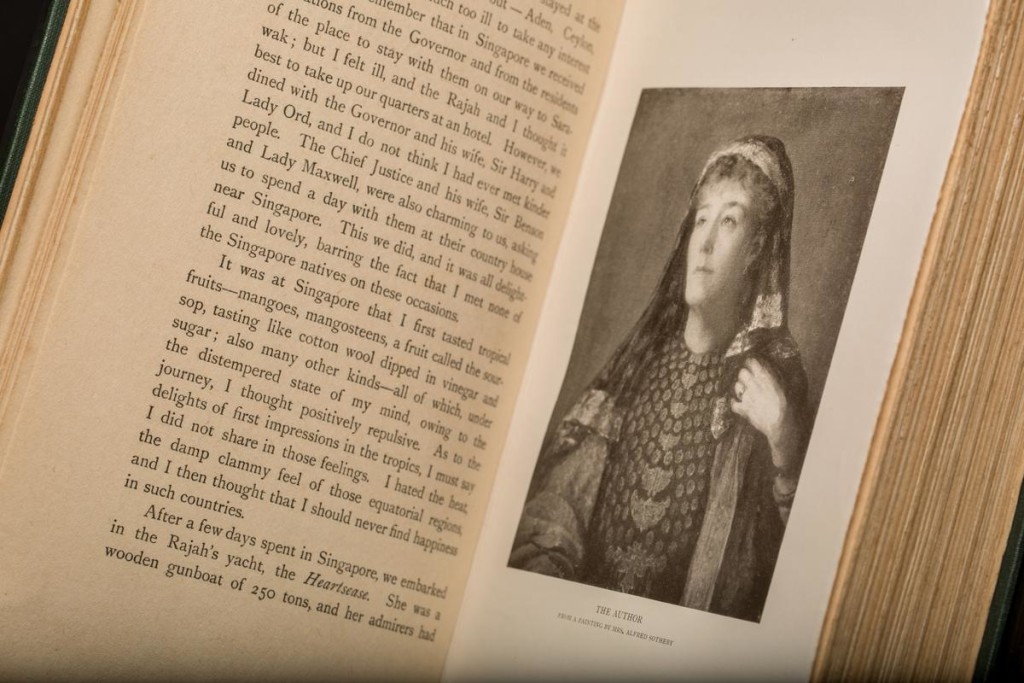

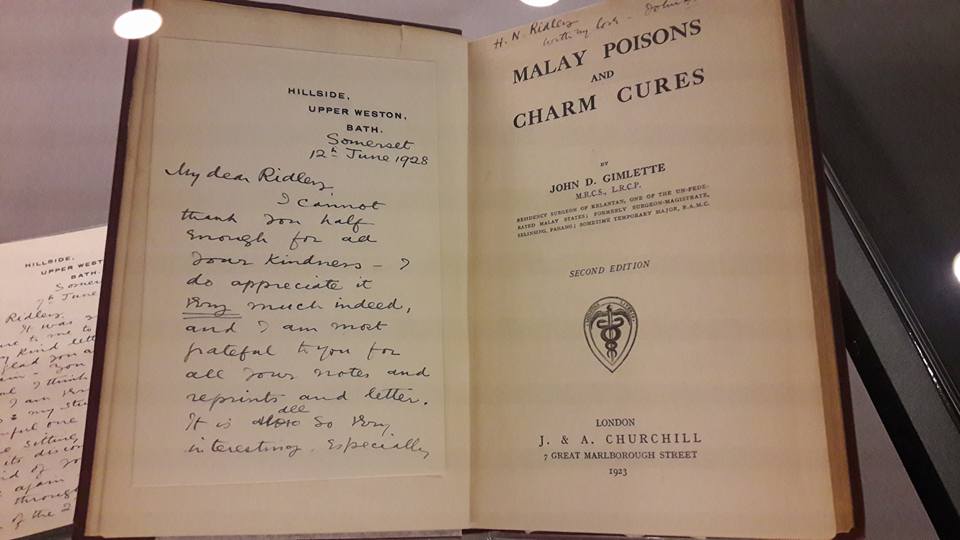
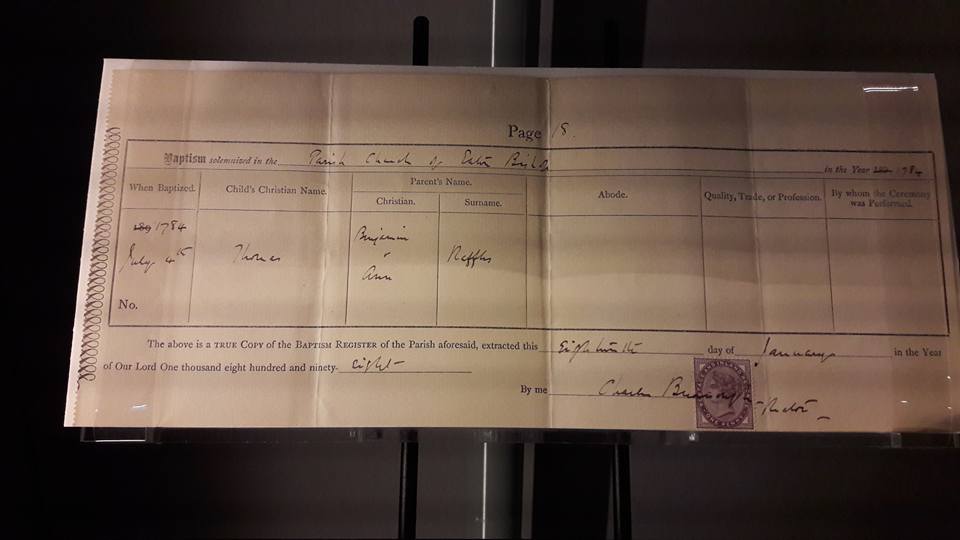
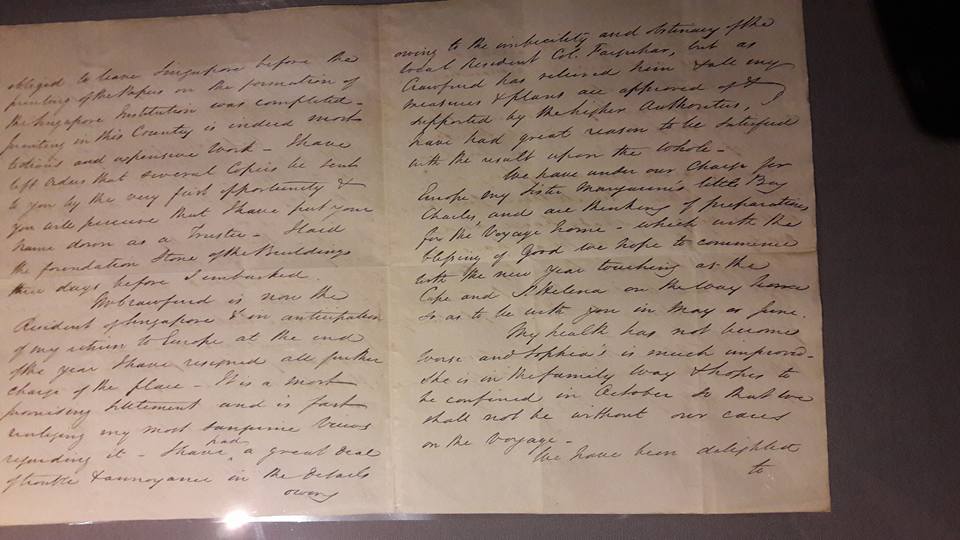


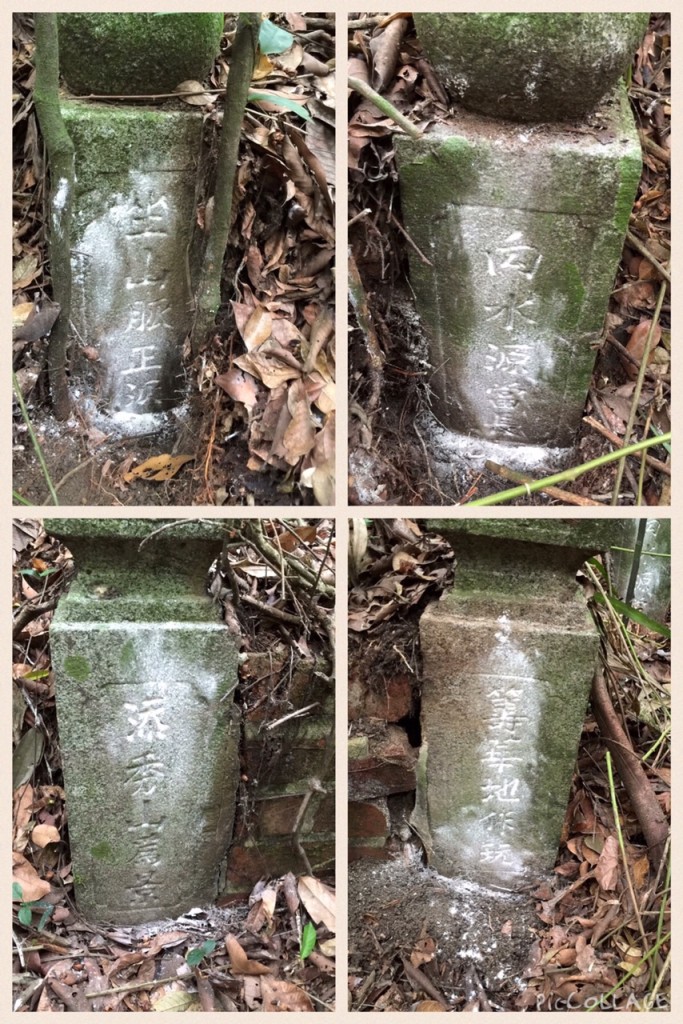
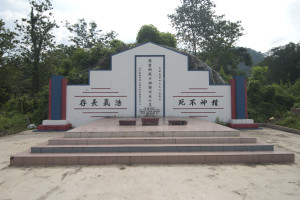
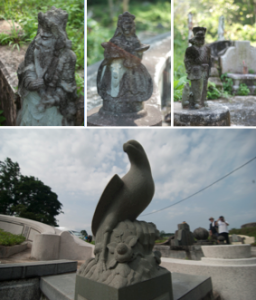





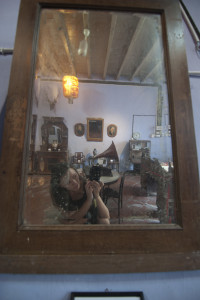
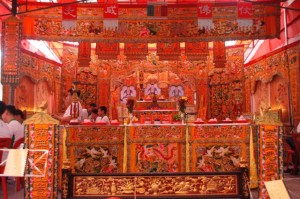
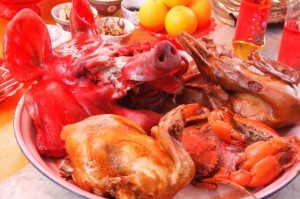

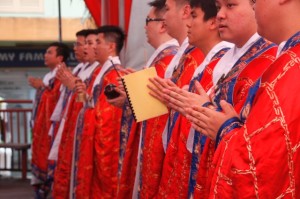
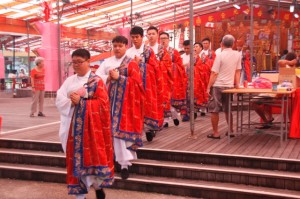
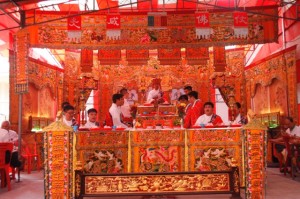

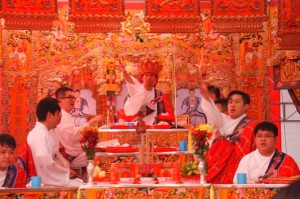
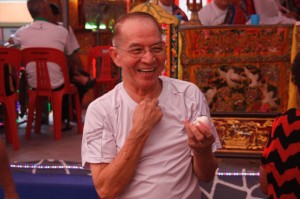
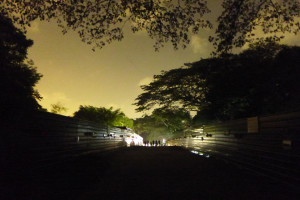
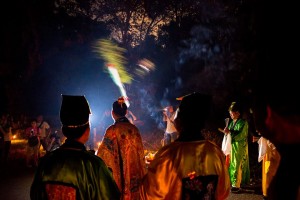

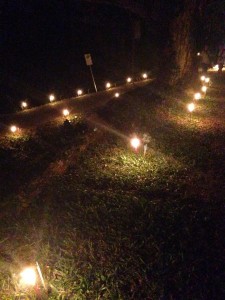
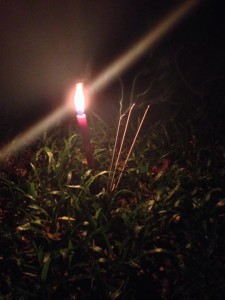
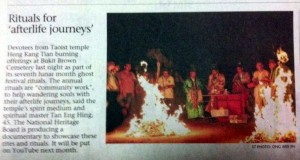
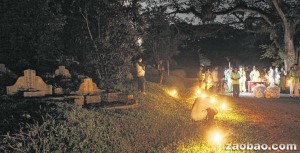
Recent Comments